

Safari Vehicles – Everything You Need to Know About Cars for the Bush
Safari vehicles come in all shapes and sizes and offer different ways to experience the African bush. The car is something that you would probably overlook when choosing one for your safari, but it can be the pivotal factor in how you experience your safari.
From the safari enthusiast who knows nothing about cars to the weekend explorer who has the 4×4 with all the extras you can imagine, this is a guide on everything you need to know. It breaks down what to expect from the safari vehicles you will be using when going on your first safari trip.
If you haven’t quite got as far as booking your first trip, then this guide to the best safaris in Africa for first-timers is the perfect starting point.

What is a Safari Vehicle?
You might be asking yourself what African safari cars are and why they matter? In general, they are large 4×4 vehicles that have been modified to ensure the passengers’ safety. It is worth remembering that the regulations about the vehicles differ from national parks to private reserves and from province to province.
Big, small, open, or closed — there are a few different types of vehicles for safaris that the different national parks use. The vehicle should suit your needs or what you want to get out of the safari.
Unfortunately, you don’t always have a choice when it comes to what safari cars are available. So here is everything that you need to know to help prepare you for what to expect and how to choose what vehicle is best for you on safari.
If you are more of the adventurous type and would rather rent your own vehicle, this will also help you in understanding what vehicle would be best. All safari vehicles should at least have some, if not all of these features:
- Snorkel to handle deep water
- Upgraded suspension for extra comfort and durability
- Upgraded wheels and tires suited to the terrain
African Safari Vehicles
When it comes to an African safari car, there are a number of different types of vehicles that could be used on your drive. Most safaris however will be in a 4×4 safari where the terrain requires a 4-wheel drive vehicle to pass through. But there are other routes that will allow you to travel in a much larger group in more comfort, such as in a sprinter van on a hardpack road.
Some National Park’s offer a pickup service for a private tour where the guide will pick you up in the safari vehicle, with the canvas sides closed. They will then open the sides once you start your safari. You wouldn’t exactly want to be in an open vehicle driving along the freeway but on the game drive, it is perfect. A closed vehicle would be more comfortable in that scenario but not as good on the game drive itself with limited viewing available.
The two most common vehicles used are either safari Jeeps or Toyota safari vehicles. They both have their own advantages and disadvantages but are some of the best for the job.
Toyota Safari Vehicles
The legendary and most reliable of them all, most game parks use Toyota Land Cruisers as their vehicle of choice. Having replaced the trusty Land Rover Defender and the African safari Jeep a few decades ago, Toyota changed the game forever.
There are both enclosed and open Toyota safari vehicles, depending on the location and guidelines of the park. Fully open vehicles provide unrestricted views of the world around you, perfect for the photographers who want to get that perfect shot. An open vehicle has no doors, windows, or frames to block your view. You also have the ability to listen and talk to your guide, ensuring that you don’t miss a thing and know what is going on at all times.
The closed version offers more protection from the elements on those colder and wetter days. The downside, though, is that your view is more restricted and you have to look through windows. This isn’t ideal for those wanting to take photographs but perfect for those who want a comfortable experience.

Safari Trucks
If you really want to go off the grid and live in the bush, then a safari truck is the answer. These beasts are normally caravans on wheels with either 4×4 or 6×6 capabilities and can live in the middle of nowhere for weeks on end. Other safari trucks that are used are normal vans, such as a sprinter van. These will take you and a group of your friends in amazing comfort on more maintained and established tracks.

Types of Safari
The type of safari that you choose to do will have an impact on the type of safari vehicle that will be available to you. Not only that but the location of your safari will also be a factor in what vehicle is available.
Kenya and Tanzania prefer to use fully enclosed vehicles with their passengers but with the added modification of an expanding or opening roof. This means that if you get tired of looking through the window with limited visibility, you can stand for an uninterrupted view. The roof is then closed once the safari is over. This is different in South Africa where mostly open-air vehicles are used for a much better experience.
Guided Game Drive
The most popular of the safari options are the guided game drives on private game reserves and National Parks. These are the go-to for anyone who is visiting a game reserve.
The professional guides will either use an open or enclosed vehicle depending on their rules and preference. If you visit during the summertime, don’t forget a hat to protect you from the sun. If you brave the winter months then layer up as it can get really cold in the bush at all times, especially when the sun goes down.
If you are wanting the full open vehicle experience then this short afternoon safari in the Kruger is a beautiful and quick excursion into the African landscape. Don’t forget to wear a solid pair of boots and clothes that you wouldn’t mind getting dirty as well, as you can expect a lot of mud and dust.
Self-Drive Safaris
For the mavericks and explorers among us, the self-drive safari is one of the top bucket list adventures. Renting or taking your own vehicle through a national park and going at your own pace to explore the landscape is the perfect option. It is possible to do a self-drive safari in any car with plenty of accommodation options in National Parks. For the ultimate experience, you’d want a 4×4 with all the bells and whistles.

Different Safari Cars for a Different Experience
Now that you know that a safari car isn’t just a car and that they are different, you will be able to choose the perfect safari to suit your needs. If you are wanting a photographic excursion into the wild then an open safari car is the best.
If you want to feel a little more protected then an enclosed vehicle is your car of choice. If you are planning a trip to Africa or Kenya in particular, then this guide on all you need to know about safaris in Kenya will help plan your trip.
Why not give this 3-day safari adventure in Nairobi a try? It is a beautiful drive into the Kenyan landscape.
Don’t forget to dress appropriately for the car that you will be driving in and enjoy every moment of your safari.

Maldives Vacation | Packages, Costs, Trips & More 2024

Nairobi Safari Parks, Tours & More | Wildlife Near and Far

Best Time to Go on an African Safari | 5 Pro Tips for Planning Your Holiday

Thornybush | Game Reserve, Lodge & Safari

Natural Remedies for Anxiety – How to Cope with Holiday Stress

Africa Trips for Couples – Getaway to Africa
Leave a reply cancel reply.
Save my name, email, and website in this browser for the next time I comment.

Compare items
- Total ( 0 )
Shopping cart

- Client Reviews
- Safari Blog
- Send an Inquiry
- Map of Africa
- Contact Details
- African Safari Cost
- Travel Insurance
- You are here
- The Budget Safari Blog
- Types of Safari Vehicles,…

Types of Safari Vehicles, Overland Trucks & More: 14 Best Ways to Explore Africa
Posted by Briony Chisholm on September 16 2022 in Adventure Travel & Activities Enquire Now!
So you’re going on a safari to see the open plains and incredible wildlife of Africa? One of the most important details to check, before booking your trip, is what types of African safari vehicles, overlanding trucks, and other forms of transportation are used.
The range of safari vehicles is enormous. From walking safaris with enclosed transfer vehicles to pop-top 4X4 safari vehicles, and from 4-seater to 44-seater overland trucks. You can go bare-bones or air-conditioned high-luxury, local dugout mokoro, horseback, or air safaris for a bird's eye view. The important thing is to choose the type of African safari vehicle or overlanding truck, and other means of exploring (or combination) that suits you, for the ultimate African safari experience.
We’ll start with the biggest African safari vehicles and end with the ‘on foot’ transportation mode.
Safari Vehicles, Overland Trucks & Ways to Explore Africa - Quick Links
- Overlanding Vehicles (Overland Trucks)
- Minibus or Microbus Safari Vehicles
- Land Rover & Cruiser Safari Vehicles
- Open Game Viewing Safari Vehicles
- Flying African Safaris
- Hot Air Balloon Trips
- Shark Cage Diving Boats
- Rubber Ducks
- Dhow Sailing Boats
- Game Viewing Boat Cruises
- Mokoro Dug-out Canoes
- Kayak & Canoe Safaris
- Horseback & Camel Safaris
- Walking Safaris (on foot & by vehicle)
1. Africa Overlanding Vehicles (Overland Trucks)

These expedition trucks are specially built to deal with the rough roads of Africa, where potholes, deep ruts, and river crossings are pretty ‘every day.’ They are normally used for longer and larger (12 to 44 people) overland Africa tours, so need to be able to carry a fair amount of equipment while still offering the budget traveller a relatively comfortable trip and good views of the passing scenery and wildlife.
African tour operators choose the best overland truck for each trip, according to the area being visited and the anticipated terrain that will be covered.
Overland Vehicle Seating Arrangements
Overland trucks may differ in their seating formation and size. Some have all forward-facing seats, while others may have some backward- or side-facing seats. The seats are generally raised, allowing for good views over the African landscapes, especially in grassy areas, where you want to be able to spot animals in the grass. Ask your tour operator about seating formation and how many are seated in a row – some overland trucks seat up to three per row, which makes seeing out a bit more difficult if you’re in the middle – before booking your overland tour.

Windows, Pop-up Roofs, and Taking Photos on Overland Trucks
The overland trucks generally have large windows, some of which open vertically, others horizontally – allowing for good views. Many of them also have a pop-up roof. This allows you to stand up and get 360-degree views and photos.
Luggage Space on Overlanding Trucks
All overland trucks are equipped with storage space (some lockable) for luggage and equipment – some under the seating section, others at the back of the truck, and some with a detachable trailer. Obviously, space is at a premium, so be sure to pack only the absolute essentials. Also, when packing, use soft luggage rather than hard (e.g. Samsonite), as it is much easier to fit into lockers and overhead compartments.
Most overland trucks have a safe onboard for the storage of valuables.
Mobile Kitchen & Diner
Many meals while on safari are prepared and eaten out in the bush, far from civilization. The overland trucks are fully equipped for this. Most safari trucks have a ‘kitchen’ section (often fold-out, beneath the seating area) with a stove and hand dish-washing area. They also have a fridge/freezer/cooler boxes to keep supplies and drinks fresh in the African heat. Africa Overland Tours are thirsty work!
Safety First on Safari!
Safety is non-negotiable. Check with your tour operator that there is a fully-stocked First Aid kit onboard, safety belts on all seats, and some means of communication (radio, etc.), in case of emergencies while on safari. All legitimate tour operators have their client’s safety first in mind and ensure that their overland trucks are kept in a good condition and are reliable for long trips – larger fuel and water tanks, spare tyres, knowledgeable and well-trained drivers, etc.
Overland Truck Gadgets
Modern overlanding trucks come fully equipped with the modern gadgets that we've all got used to. With iPod/MP3 points, you can listen to your own soundtrack as you watch the African landscape slide by. They also have onboard charging facilities so ensure that your camera remains fully charged and you don't lose that once-in-a-lifetime shot of a lion hunting his prey!

Some smaller tours use smaller overland trucks – seven to nine-seaters – which provide window seats only, so nobody has to be in a middle seat.
Luxury Overlanding Trucks
These are state-of-the-art 4x4 overland vehicles used on small-group overland tours. A custom-built luxury overland truck comfortably accommodates up to 12 guests. They are specially designed to provide extra space and amenities. This is the overland vehicle of choice for a more luxurious overlanding Africa experience with all the adventure in added style and comfort.
Features include an onboard toilet and a water filtration system for purified drinking water on the road. The luxury overland trucks have reclining leather seats that rotate 180 degrees and lock into your preferred position (for example, window or front-facing).

Each seat has overhead air-conditioning vents that can be independently operated for individual control of airflow and temperature. Every seat also features a USB port panel for charging your electronic devices and there is a reading light above each seat. Each seat has a safety deposit unit with individual key code access, for storing your passports, phones, and smaller valuables.
Recommended Africa Overland Tours
20-Day East African Overland Tour - South or 20-Day Cape Town to Victoria Falls Overland Tour - Camping Safari
Best of Namibia Safari Adventure - Overland Camping Tour
Small Group Tours in Luxury Overland Trucks: South Africa Safari Adventure , Delta & Chobe Safari Adventure & Explore Namibia Safari Adventure
More Overland Africa Tours
2. Minibus or Microbus Safari Vehicles
For smaller safari groups and shorter tours that don’t go through hugely rugged areas, adapted microbuses (or minibuses) are used. As safari vehicles, Toyota Quantums and Mercedes Sprinters are most commonly used. The optimal number in most of these safari vehicles is six to ten people, forward-facing.

When booking a safari, find out from the tour operator which safari vehicle is used, and how many window seats there are, to ensure that everybody gets a window seat and has a good view of the spectacular scenery and amazing animals of Africa.
These safari microbuses are specially adapted for safari travel and are generally equipped with GPS tracking, sliding windows, cooler boxes, fire extinguishers, and First Aid kits. They generally have a softer suspension than other safari vehicles, giving a slightly more comfortable trip. Many of them – especially on Kenya Safaris – also feature pop-up tops, allowing travellers to stand and view/photograph the countryside and animals from the minibus.
Some minibuses are fitted with air-conditioning. This is a welcome relief from the sweltering African heat but may detract from the whole experience of Africa, as the windows will be closed, blocking out the sounds of the bush.
Recommended small group trips using minibus safari vehicles
5 Days Budget Masai Mara & Lake Nakuru Camping Safari
South Africa’s Garden Route Adventure Tour
3. Land Cruising Safari Vehicles

Land Cruisers and Land Rovers are used on many safari tours. They range from ‘bare-bones’ models i.e. no added ‘mod-cons’, to highly specialized vehicles that may include air-conditioning, MP3 players, and slightly tinted windows for protection from the sun. Some of the newer safari vehicle models also have pop-up roofs, for added viewing potential, especially in Tanzania.
Safari Vehicle Seating Arrangements
These safari vehicles, in general, can carry four to six (extended version) passengers, all forward-facing. Check the seating configuration with your tour operator before booking. While extended safari vehicles can carry more people, they tend to be slightly more difficult to handle on the road. Most of the Land Cruisers are 4X4s, allowing travel over the rough terrain that Africa is known for… Have a look at images of the road into the Ngorongoro Crater if you want an idea!
While self-hire safari vehicle options are available, tour operators all have experienced drivers who, more often than not have extensive knowledge not only of handling the rough terrain but of the areas through which we travel.
Safety First on Safaris!
Most Land Cruisers are equipped with all possible safety features – fire extinguishers, First Aid kits, seat belts and many have airbags. They have specially designed fuel tanks to allow the economical use of diesel during long journeys and snorkels for travel through rivers.
Luggage Space & How to Pack (light)
In general, luggage is taken either in a trailer or packed on the roof, to keep the safari vehicle as uncluttered as possible inside, for your comfort. Remember to pack lightly!
Recommended 4x4 Trips in Land Cruiser Safari Vehicles
Tanzania Lodge Safari to Serengeti, Ngorongoro & Tarangire
Masai Mara, Samburu, Nakuru 4x4 Kenya Lodge Safari
4x4 Ethiopia Tour - Danakil Depression & Awash National Park
4. Open Game-Viewing Safari Vehicles

Within many of the game parks, smaller, open-sided, or completely open safari vehicles are used for game drives. While these are not suitable for long distances – wind, dust, sun, and Africa’s elements can be harsh! – they are great for game drives as they allow you to get up close and personal with the sights, sounds, and smells of the African bush.
These safari vehicles are most often adapted Land Cruisers which seat between six and nine passengers. Some are designed with tiered seating so that nobody’s view is blocked by the person in front of them’s head!

Protection from The Elements
Due to their being open to the elements, it is vital to protect yourself against the African sun. Hats, scarves, and windbreakers are all excellent shields from fiery hot UV rays. Many of these open safari vehicles do have canvas/plastic canopies that can be closed if the weather becomes uncooperative. Thunderstorms in Africa can be wild, and come on within minutes!
Safari Drivers & Trackers
Most often when going on game drives, there will be a driver and a tracker (often sits on the front of the car, allowing him to track spoor and dung.) The trackers are highly experienced, and allow one to see the best Africa has to offer in wildlife.
Recommended trips with open game-viewing
Chobe, Moremi & Delta Botswana Camping Safari
6-Day Kruger Park & Private Game Reserves Safari (Lodge)
5. Bird’s-Eye View Flying Safaris

‘Air safaris’ are offered at various places in Africa, like Victoria Falls and the Okavango Delta . A flight over the delta in a small plane gives you an idea of the vastness of the area. A helicopter flight over Victoria Falls will make you feel like an eagle soaring above this spectacular area!
Helicopters on Safari
The ‘vehicles’ used differ from operator to operator. The helicopters used at Victoria Falls are generally 4- or 6-seaters and many have bubble windows, allowing for good viewing. Do remember that, in the 6-seater, you may land up in the middle seat, making seeing out slightly more difficult.
Light Planes on Safari
In the Okavango Delta, many of the lodges are only reachable by air, especially during the wet season. Many small plane charters are available both as a means to get to the lodges and for a birds-eye view of the delta and spectacular photographic opportunities – a once-in-a-lifetime experience.

Recommended safaris with flying components
Victoria Falls Budget Tour Package (Zimbabwe)
Okavango Delta & Chobe Accommodated Safari (North)
6. Hot Air Balloon Rides
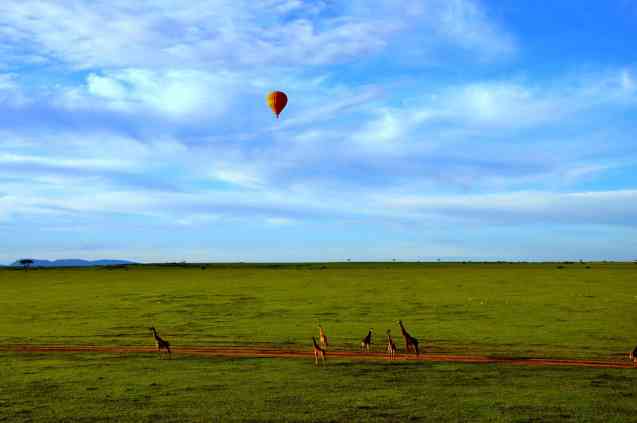
What could be better than watching the sun rise over the Serengeti while floating gently above its vast plains in a hot air balloon? Nothing, really. Hot air balloon rides are offered at various places in Africa (like Masai Mara and Serengeti) and provide an incredible, thrilling, bird’s-eye view of the vastness of Africa, dotted with wildlife.
Recommended trips with balloon safaris
4-Day Masai Mara Luxury Camping Safari - optional hot-air balloon trip over Masai Mara, Kenya
12-Day Kenya & Tanzania Budget Lodge Safari - optional hot-air balloon trip over Serengeti, Tanzania
7. Boat to the Great White Sharks

The boat used for our Great White Shark Cage Diving trips in South Africa is a custom-built catamaran. Combining comfort, stability, speed, and safety, this boat ensures not only a good trip for you but also promises minimal interference in the shark’s natural habitat.
The custom-built shark cage diving boat is typically a 46-foot (14m) long catamaran with a spacious upper deck for surface views of the sharks and other marine animals and platforms for the bait and decoy handlers to ensure the best possible shark viewing. It is a lightweight aluminium vessel powered by four big four-stroke 300-hp outboard engines and is equipped with the most advanced electronic navigation equipment.

Staying dry and comfortable
Featuring a spacious indoor cabin, as well as separate wet and dry outdoor decks, the design ensures that when you’re wet, you’re wet, but once you’re out and want to be dry and comfortable, you can be. The boat usually features a central dining area, storage facilities for personal items, and both male and female toilets.
Electronically, the boat is fully equipped with a tracking device, radios, GPS, radar and navigation equipment, depth finder and echo sounder, and even a 12V charging facility for cameras, cell phones, and laptops.
Safety - yours and the shark's
Safety is of utmost importance and there are life vests for all passengers, fire extinguishers, a life raft, and capsize bottles on the boat. In case of medical emergencies, there are two onboard First Aid kits, oxygen cylinders, and fluid replacement.
Not only is your safety cared for, but that of the sharks too. The cage has no sharp points or edges that could hurt the animals. The cage itself is specially constructed of reinforced steel and can take five people comfortably. It is lowered and winched back up using a winch from a sturdy gantry. Oxygen is supplied from the boat to divers via a ‘hookah’ system with hoses running into the cage.
This, too, is a once-in-a-lifetime experience. There’s not much more exhilarating than coming face-to-face with a Great White in its own habitat!
Recommended shark diving tours
2-Day Great White Shark Dive Package
Great White Shark Cage Diving Day Tour
8. Rubber-Ducking the Gorges

Jinja, in Uganda - where the longest river in Africa, The Nile, begins at its source, Lake Victoria - is one of the top whitewater rafting destinations in the world. Add in Victoria Falls, the Fish River Canyon, and the Orange (Gariep) River, where various boat options are offered, from boogie-boarding the rapids through canoeing to rubber ducking both flat water and white water, and it's an adrenaline junkie's dream. Your trip choice depends completely on your adrenaline requirements/limits!
Whichever you choose, be sure to check that the tour operator follows all safety regulations, ensuring that you have a safe, enjoyable trip through the gorge. Life jackets and helmets are non-negotiable, these waters can get wild, and a knowledgeable, trained guide will ensure you get the most out of your trip.
Recommended trips with rubber ducking
Victoria Falls Adventure Tour Package (Zambia)
Masai Mara & Gorilla Trekking Overland Tour or Uganda Safari & Gorilla Trekking Tour
9. East African Dhows (sailing boats)

There is nothing quite so beautiful as seeing a traditional dhow gliding through the warm, azure waters of the Indian Ocean. Originally used for trading, these long, narrow boats with triangular sails, expertly sailed by locals, are used along the east coast of Africa.
So whether you’re heading off to the Bazaruto Archipelago or exploring the coastline of Zanzibar , do yourself a favour and catch a ride on one of these graceful sailing vessels.
Recommended trips with dhow safaris
22-Day Zambia, Malawi, Mozambique & Kruger Safari
5-Day Zanzibar Holiday Package - Adventure Tour
10. Game Viewing Boat Cruises
One of the best ways to watch wildlife and birds on safari in Africa is without a doubt by boat. It's hard to compete with a laid-back sunset cruise. Exceptional wildlife and bird sightings along the rivers and estuaries in top game reserves of Africa. Stunning scenery. Chilled sundowners and snacks or dinner onboard. Easy-paced, yet exciting and novel.
The boats used on boat cruises vary but they are typically open-sided motorboats. The larger boats offer standing and sitting room and are sometimes double-deckers.

Chobe National Park in Botswana is one of the best places for boat-based game viewing in Africa. Another favourite spot for scenic boat cruises is the Zambezi River near Victoria Falls. There are plenty of other great destinations for game-viewing boat cruises, from Uganda to South Africa.
Recommended Safaris with Game-Viewing Boat Cruises
- Botswana: 5-Day Chobe & Okavango Delta Lodge Tour or Botswana Exclusive Camping Safari to Chobe & Okavango - include Chobe River boat cruises (as with most Chobe Safaris)
- Uganda: Gorilla Trekking & Queen Elizabeth Park Safari - includes boat cruises on Kazinga Channel (Queen Elizabeth Park) & in Murchison Falls National Park
11. Winding Through the Waterways in Mekoro

If your safari includes a trip into the Okavango Delta , you will more-than-likely experience the gentle pleasure of a trip in a mokoro canoe. Check with your tour operator that this is included as part of the package, or offered as an optional activity. You don’t want to miss out on this opportunity to get up close and personal with the prolific birds and wildlife – including elephants, hippos, and crocs – of the Okavango Delta.
Mokoro History
These traditional dug-out canoes are made of wood and guided by a ‘poler’, who stands at the helm. While originally made from indigenous trees, such as the Kingella or ‘Sausage Tree’, they are increasingly made of fibreglass these days. While not as ‘authentic’, this is preserving the indigenous trees of the area and provides just-as-good a means of transport through the spectacular waterways of the delta.
Experienced polers
Many people are afraid of hippos overturning a mokoro. While this is not an impossibility – this is Africa, after all, and you’re in their habitat – the polers are experienced in the area and are very aware that hippos are territorial creatures. They are sure to avoid dangerous situations.
A trip on a mokoro allows you to get as close to the sights and sounds of Africa as is physically possible. Don’t miss out on this once-in-a-lifetime experience.
Recommended safaris with Mokoro canoe trips
Botswana Parks & Okavango Delta Budget Lodge Safari
Budget Delta Mokoro Trail & Savuti Safari
12. Kayak & Canoe Safaris
If you're a kayaking or canoeing enthusiast this is the ultimate game-viewing safari vehicle for you. Watch the wilderness glide by as you paddle quietly along the rivers and waterways of Africa. A canoeing or kayaking safari gives you more independence than a mokoro trip where a guide poles you along.
The canoes and kayaks used on safaris vary widely, ranging from inflatable canoes to rugged old-school kayaks.

Some canoe safaris offer game viewing opportunities along the riverbanks and even in the waters whilst most are more about taking in the wild scenery and spotting birds.
Recommended safaris with canoe or kayak trips
- 16-Day Zambia & Malawi Small Group Safari or 4-Day Victoria Falls Tour in Zambia - include Zambezi River Canoe Trips
4-Day South Africa Garden Route Tour - includes Canoeing in Wilderness National Park
15-Day Zambia & Malawi Small Group Budget Safari - includes kayaking on Lake Malawi
13. Explore the African Bush on Horseback or Camelback
An incredible way to experience the bush up close! Horseback safaris are allowed in certain game reserves so if you want to experience the bush on horseback you'll need to pick your destinations accordingly. Two of the most popular African safari destinations that offer horseback safaris are Victoria Falls (Zambia or Zimbabwe) and Big 5 game reserves near Cape Town in South Africa.

For a whole new experience, you can explore Africa by camel. An entirely unique and exotic mode of transport indeed. Camelback safaris are far rarer than horseback safaris. You can only embark on a camelback adventure in a few places, including parts of East Africa.
Recommended trips with optional horseback safaris & camelback safaris
- Experience Southern Africa Exclusive Budget Safari & Zimbabwe & Botswana Safari (Lodge Tour) - optional horseback safaris at Victoria Falls
3 Day Big 5 Cape Town Safari & 2 Day Big 5 Cape Town Safari - optional horseback safaris at Aquila Game Reserve
Lake Turkana & Northern Kenya Camping Safari - includes an overnight camelback safari in Tuum (Samburu District of Kenya)
14. Walking Safaris in Africa

This is (obviously) only an option once you are in the game reserve. Depending on the safety i.e. the presence of dangerous predators, many game reserves offer guided walking tours. This is the ideal way to get a true, African, wildlife experience. By walking through the bush all your senses experience Africa – sight, smell, sounds, touch – unadulterated by the sound of motors and really off the beaten track.
Guides and trackers
Most reserves have highly experienced guides who are a fountain of knowledge regarding the fauna and flora of the area and are excellent trackers. This allows you to not only experience the bush but also learn all sorts of fascinating facts while seeing the birds, insects, and animals that call Africa ‘home.’
__large__medium.jpg)
If you have the opportunity, do not miss out on a walking safari. You can’t get closer to nature than this.
Recommended walking safari trips
4-Day Kruger Park Walking Safari or 5-Day Kruger Safari - Hiking Tour
South Africa Walking Safari to Kruger & Zululand
7-Day South Luangwa Tented Camps Walking Safari
Talk to an Africa travel expert to find the ideal types of safari vehicles and other transport modes for your trip to Africa.

[Updated in 2022: originally posted in 2014]
About the Author
Briony chisholm wordsmith & pharmacist.

Similar & Related Blog Posts
Below you’ll find further reading and articles related or similar to this post.
What are Africa Overland Tours & Adventures all about?
Landia Davies | August 21 2018

Complete Safari Packing List: Easy Guide 2 What to Pack for African Safaris
Landia Davies | February 01 2022

10 Best National Parks in Africa - in the Top African Safari Countries
Landia Davies | March 05 2024

Size Up Africa Overland Safaris - Small vs Big
Landia Davies | July 30 2013
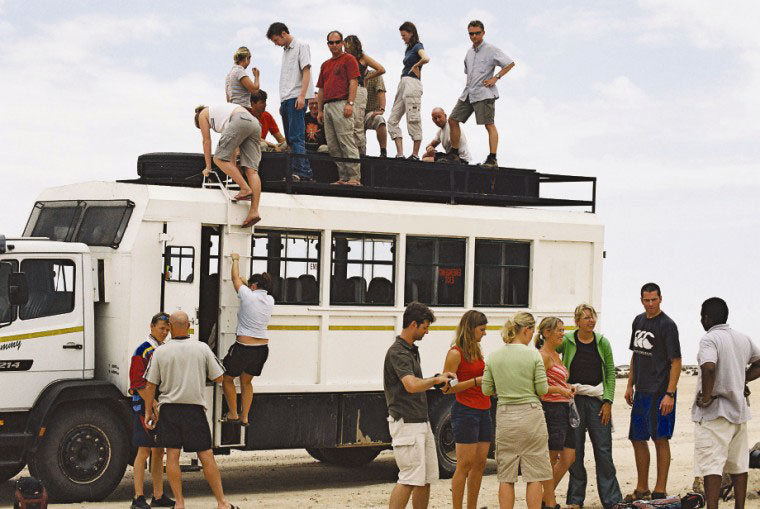
What’s a safari and what is a wildlife safari in Africa like nowadays?
Landia Davies | May 06 2022

Overland Travel in Africa: how has the adventure evolved?
Andrew Arnott | August 30 2018

African safaris with kids made easy
Katherine Murphy | August 14 2018

Budget Safari Guide: How Much Does a South African Safari Cost?
Kate Explorer | August 26 2022
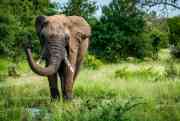
How to plan an African safari on a very tight budget: the 8-step guide to safari planning
Ingrid Van Wyk | January 19 2024
__small.jpg)
The best elephant safari in Africa? 9 African safaris with elephants galore
Landia Davies | August 03 2022

When is the all-round best time for African safari trips?
Ingrid Van Wyk | December 08 2020

The Safari Safety Guide: How to Stay Safe on African Safaris
Briony Chisholm | June 15 2022
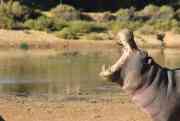
Private Group?
A private, tailor-made safari is within your reach. Experience all of your bucket-list safari related items on a budget now.
A complete guide to transportation on a safari
You may have knowledge about what an African safari is (overland style), but do you know all the different ways you can go on a safari? If you thought an African safari was just about 4x4s, think again!
Overland trucks
Many people choose to travel through Africa and its game parks on an overlanding tour (which is what we specialise in!). On this kind of trip, which can range from a few days to a few months, you travel on big overlanding trucks which are custom built to endure the tough African roads and self-sufficient to carry everything needed for the trip, from cooking gear to camping gear. e kitchen sink! Overlanding trucks usually have big windows which you can open wide for great wildlife photo opportunities.
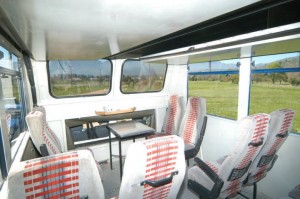
Here are some of our most popular overlanding safari packages:
41 day Nairobi to Cape Town overland
14 day Mozambique and Kruger overland adventure
4x4s and open game viewing vehicles
Many game lodges in and around wildlife reserves and parks offer game drives with experienced guides and trackers who track down wildlife as they drive along, to try and find you the best sightings. These game drives are offered in two types of safari vehicles: the most common African safari vehicles you’re likely to come across. The first is 4x4s – usually Land Cruisers or Land Rovers which have been converted for game drives with things like a tracker’s seat in front of the bonnet of the car, radios for communication with the lodge and other guides, large windows and pop up sunroofs, so you can take photos out of the roof of the car. The second type is the open game viewing vehicle – a 4×4 which has been specially adapted with open sides. Sometimes these kinds of vehicles have a canvas roof and sometimes they are completely open. These vehicles are excellent for game viewing, as you have the best unobstructed views of the animals.
Hot air balloons
For a truly memorable game viewing experience, you can take to the skies in a hot air balloon. There are a number of game parks and reserves in Africa that offer hot air balloon safaris , which generally last for about an hour and take off just after dawn.
On our 14 day Namibia and Okavango Delta tour you can do a hot air balloon safari over the Okavango Delta.
Planes and helicopters
If you’ve got the cash to splurge, flying safaris are fantastic. There are safaris you can do where you fly in between camps in a small plane, spotting game high above the wilderness area. The less expensive option is to do a helicopter ride of an hour or two to give you a bird’s eye view of the landscape and the animals. A wonderful place to do a helicopter safari is in the Okavango Delta.

On some of our overlanding tours we offer you the chance to take scenic flights over some of Africa’s most spectacular landscapes:
19 day Johannesburg to Tanzania (fly over the Okavango Delta)
14 day Namibia to Okavango Delta (fly in a helicopter over Victoria Falls)
21 day Victoria Falls to Cape Town (fly over the Namib Desert)
Houseboats and motorised boats
With many bodies of water surrounded by wilderness areas, Africa is a great place to go wildlife spotting by boat. You can stay in a lodge or a campsite and if you’re near a river, opt for a boat cruise of a few hours to spot animals such as elephants, crocodiles and hippos. If you want a longer stay on the water, houseboats in places like Chobe National Park and Lake Kariba are great. You stay on the houseboat for several days and can see wildlife and birds from the deck, or hop onto tender boats to cruise closer to the shore to see more wildlife.
Mokoros are traditional dug out canoes used in the Okavango Delta in Botswana. Gliding through the waterways of the Okavango Delta in a mokoro is the best way to see this pristine natural area – one of Africa’s wildest places – and its amazing wildlife.
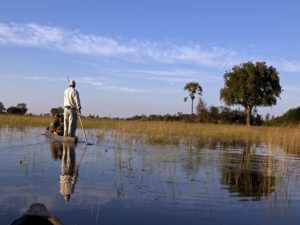
Here are our popular overlanding safaris that include mokoro trips in the Okavango Delta:
7 day ultimate Botswana budget safari
7 day Okavango Delta and Chobe adventure
8 day Botswana waterways
For experienced riders, doing a horseback safari in Africa is a real treat. You generally spend most of the day in the saddle, getting to go to places in reserves where there are no roads, and getting to see the Big Five outside the confines of a car. There a number of places where you can do horseback safaris, from the Okavango Delta to private reserves in Zambia and South Africa.
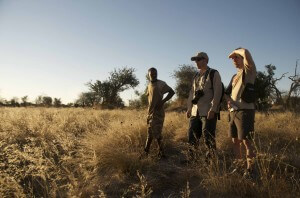
Walking Safari Tour in South Africa
About Sarah Duff

- First-hand experience
- Advice and guidance
- We're passionate travelers
Enquire Now
- Hidden Tour Title Hidden
- Hidden Tour Length Hidden
- Hidden Tour URL Hidden
- Hidden Tour Price Hidden
- Hidden Tour Style Hidden
- Hidden Compared Tours Hidden URLs
- Your name * First Last
- Your email address *
- Hidden Alternative Email (deprecated)
- The tour you're intested in
- The tours you're interested in Please do not edit these tour names so we can assist you with your choices.
Please enter your number below.
- When would you like to travel? Apr 2024 May 2024 Jun 2024 July 2024 Aug 2024 Sep 2024 Oct 2024 Nov 2024 Dec 2024 Jan 2025 Feb 2025 Mar 2025 Apr 2025 May 2025 May 2025 Jun 2025 Jul 2025 Aug 2025 Sep 2025 Oct 2025 Nov 2025 Dec 2025
- 26 - 40 Days
- 15 - 25 Days
- 8 - 14 Days
- How many travelers? * Select... 1 2 3 4 5 6 7 8 9 10
- 12 - 17 years
- 18 - 39 years
- 0 - 11 years
- 0 - 7 years
- 8 - 9 years
- 10 - 11 years
- South Africa
- What travel style in Africa would you prefer? * Not Sure Accommodated Tour Camping Adventure Small Group Safari
- Your question or query Feel free to ask us anything! We can advise on breathtaking scenery, colourful cultures, local cuisine and of course, amazing wildlife!
- By submitting your enquiry you agree to our terms of service .
- Phone This field is for validation purposes and should be left unchanged.
FEATURED POSTS
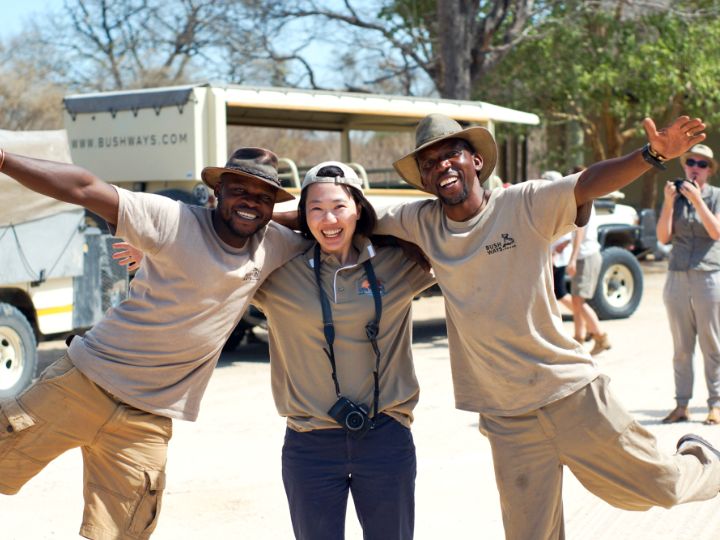
What are the Pros and Cons of Group Travel vs Independent Travel in Africa?
Group Travel vs Independent Travel: A Comparative Insight Embarking on an African adventure presents a crucial decision: should you explore the continent in a group setting or venture solo for an...
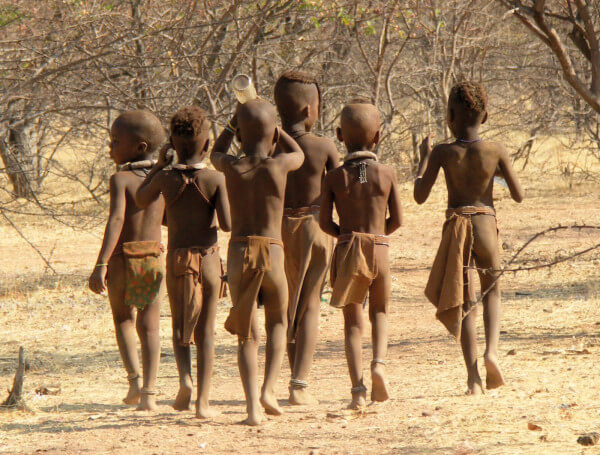
The San Bushmen
The San Bushmen were traditionally hunter-gatherers obtaining there food from wild plants and animals. These days, however, this tradition has mostly been replaced with farming or pastoralist...
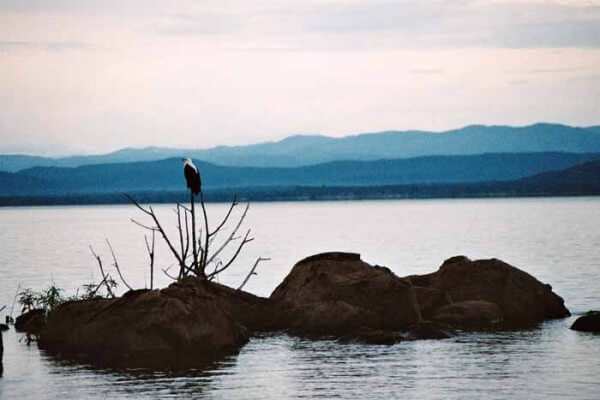
The African Fish Eagle
Embarking on a safari adventure in Africa offers a kaleidoscope of wildlife experiences, but few are as awe-inspiring as witnessing the African Fish Eagle in its natural habitat. Known for its...
Blog categories
- Accommodation
- Adventure Activities
- Africa Blog
- Destinations
- Only in Africa
- Travel Articles
- Victoria Falls
- Videos showing life on the road
Submit a Comment Cancel reply
Your email address will not be published. Required fields are marked *
Submit Comment
Previous Article
Next article.
This website uses cookies. We use cookies to analyze our traffic, enhance our website’s functionality and performance and better experience for our users. If you require more information, please view our Cookie Policy .

Call Today!: 1-800-387-2706
Different types of african safari vehicles.
By Andrew Lee & David "Red" Hunt
Before you embark on your next African safari, it is good to know what kind of vehicle you will be exploring in. Depending on your safari location and game lodge, your vehicle’s style will differ.
Different parks have different rules, and some lodges add features to their vehicles that make your many hours spent on game drives more comfortable.
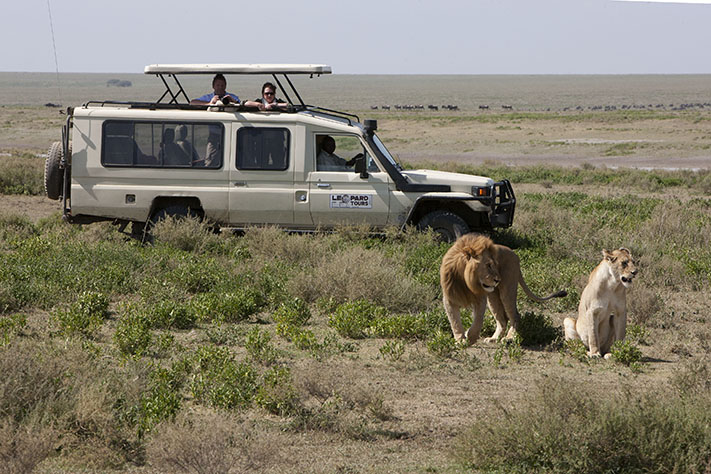
Private Reserves vs. National Parks
You may be wondering what the difference is between private game reserves and national parks. Our trips offer safaris in both settings and it’s good to know what to expect from each.
Private Reserves
Private Game Reserves have a more exclusive, intimate feel. These game reserves are privately owned and tend to be smaller. The owners create rules and regulations, like determining who and how many vehicles can enter at a time.

The safari rangers and trackers know most of the wildlife in the area extremely well and they even know their habits. The emphasis is placed on quality viewing. Also, more safari time is allowed as being within a private concession, as there are no opening and closing times.
An extra benefit to private reserves is the ability to drive anywhere. You can take a shortcut, drive around trees, and virtually go anywhere in search of wildlife. This privilege is treated with great care – the focus is on sustainability and the guides will seldom go off road to protect the land and respect the game.
.jpg)
National Reserves and National Parks
When it comes to rules and regulations about where safari vehicles can drive and what types are allowed, things are often stricter in National Parks than private game reserves. National Parks, like the Kruger National Park, are usually much larger and safaris can differ from the private reserves.
In Southern Africa, you will most commonly be riding in an open safari vehicle that allows you to get up close and personal with the wildlife you encounter.
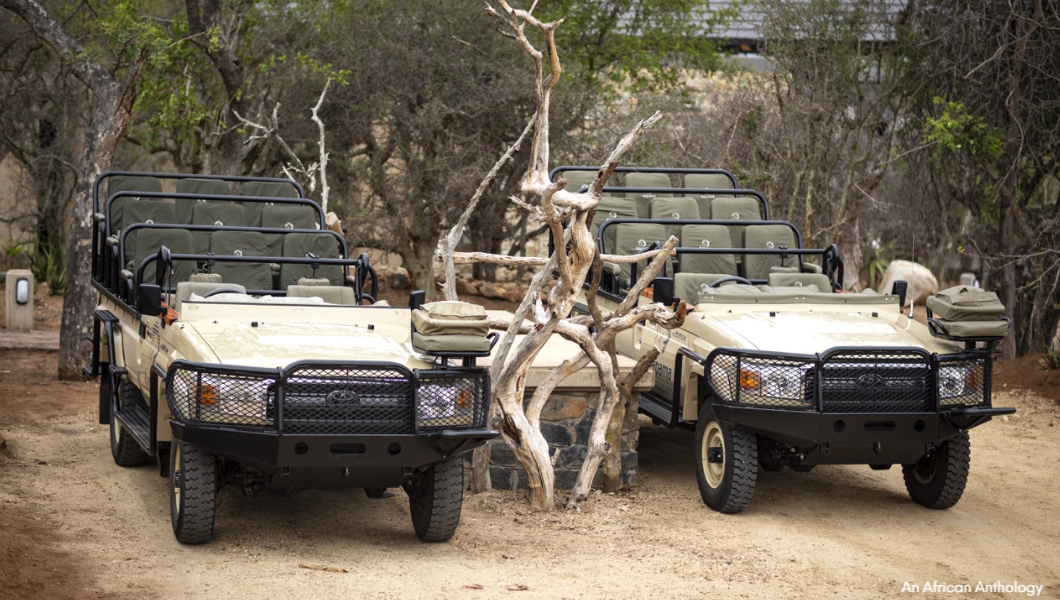
If your safari is in Southern Africa, you can expect to venture out in an open jeep style 4x4 safari vehicle with three rows and holds up to six guests. This guarantees everyone a window seat for prime photography and viewing experiences. Most vehicles are roofless, while others have a canvas sunshade to protect you from the hot African sun. These open style vehicles may also have a jump seat for your safari tracker, who is always on the lookout for wildlife.
.jpg)
In some Southern African countries like Botswana and Zimbabwe, you may also ride in a closed 4x4 safari vehicle.

Read More About:
- South Africa
In places like Serengeti National Park, you will witness wildlife spectacles like the Great Migration where nearly 2 million wildebeest and 20,000 plains game migrate from the Serengeti (in Tanzania) to the Maasai Mara National Reserve (in Kenya) to search for grazing grounds and water. In these parks, your safari vehicle must follow the roads and cannot take any “shortcuts." Some game parks limit the number of vehicles around a sighting and private game parks always limit with a maximum of 2-3 vehicles around a sighting.
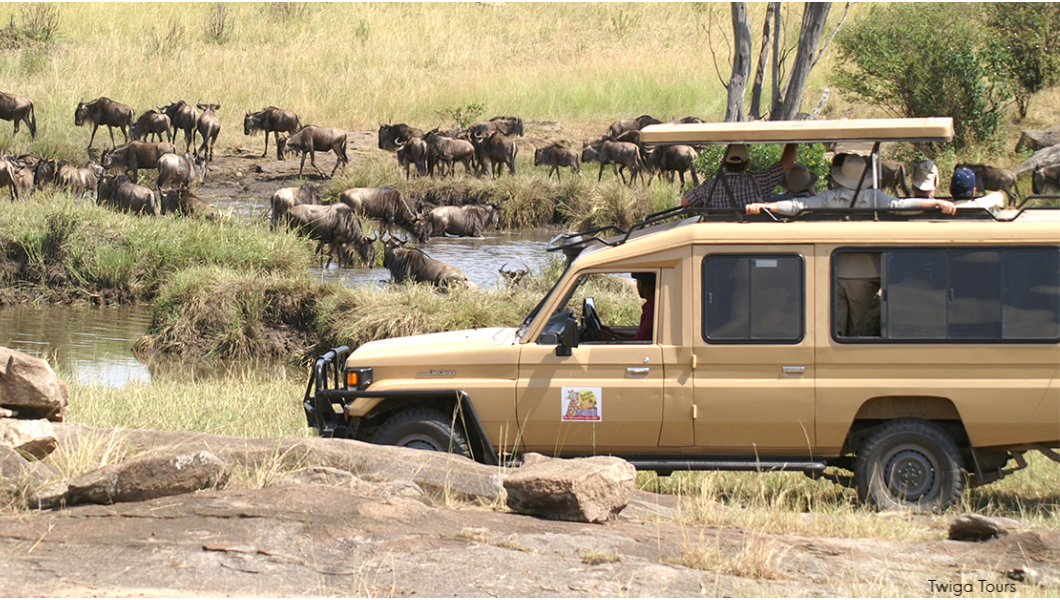
Remember that these public parks and reserves are open to anyone, so they may seem “busier” at times than private reserves, where you may be the only vehicle on the property. Of course, certain places get busy for a good reason.
In East Africa, you will be exploring in a closed safari vehicle with a pop-up roof that raises for game viewing and photography. This type of vehicle has three rows of seating and six window seats. Most also have air conditioning and a refrigerator to keep you cool and hydrated during your African adventure. Since distances can be great in places like the Serengeti and Maasai Mara, having this extra bit of luxury can make your game drive much more comfortable.
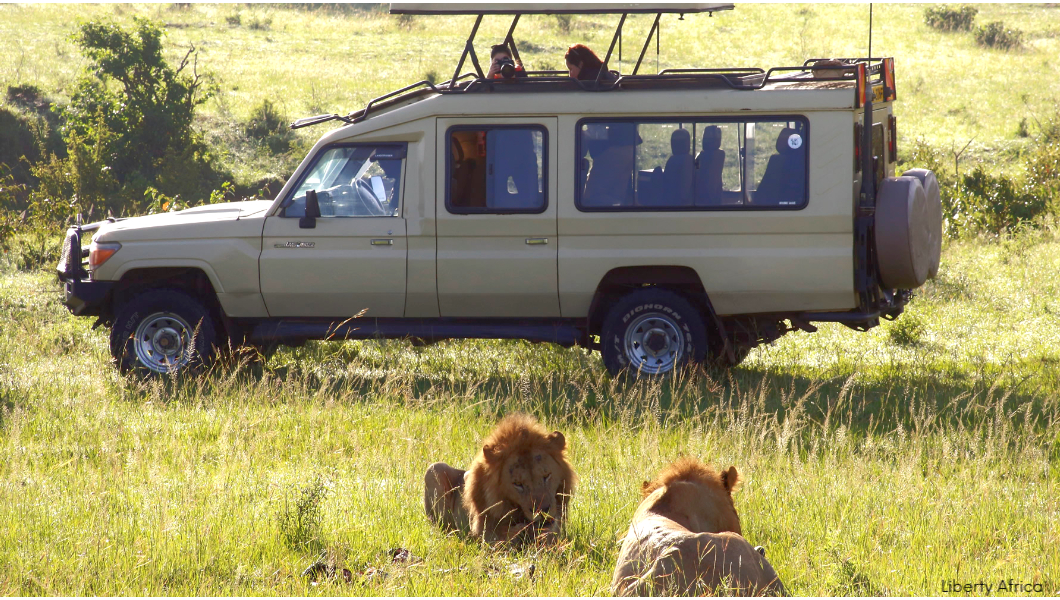
In East Africa, open vehicles are not permitted in national parks (including Ngorongoro Crater) and are closed (can be open on the sides with a roof) for guest safety. In luxury, private game reserves, vehicles are open.
.jpg)
Speak to your Africa Specialist regarding your specific itinerary about which safari vehicle you will be traveling in on your game drives.

6 Features Your Safari Car Must Have on Your African Adventures
Oct 12, 2019 | Brave Africa Safari , Safari Tips

When planning an African adventure, there are a thousand questions you can and should ask yourselves. But we’re here today to talk about a subject that’s often overlooked by safari-goers. Whether it’s your first time on an African adventure or your tenth, before you choose your Africa safari camp or lodge, ask about your safari vehicle.
The Importance of Your Safari Car
Your safari vehicle could make or break your trip. You’ll be in this car day in and day out for hours upon hours at a time. It will be how you get through the thick and wild Bush, and it will be responsible for taking you to the animals.
You might be surprised to learn that every Africa safari camp and lodge uses different vehicles. Sometimes it’s because they want to offer a special experience for their guests, and other times the differences are just about saving costs.
Choosing a company that uses a crappy safari car will leave you feeling vastly disappointed and jealous of every other safari vehicle you see. But if you’ve never been on safari before, how do you know what’s a good safari vehicle and what’s not?
6 Features You Want in Your Safari Vehicle
At Brave Africa, we have top of the line safari vehicles, and we think the experience is well worth it, but don’t take our word for it.
Let’s dive down into the type of experience you want on your African adventure and the kind of safari car you need to make it happen.
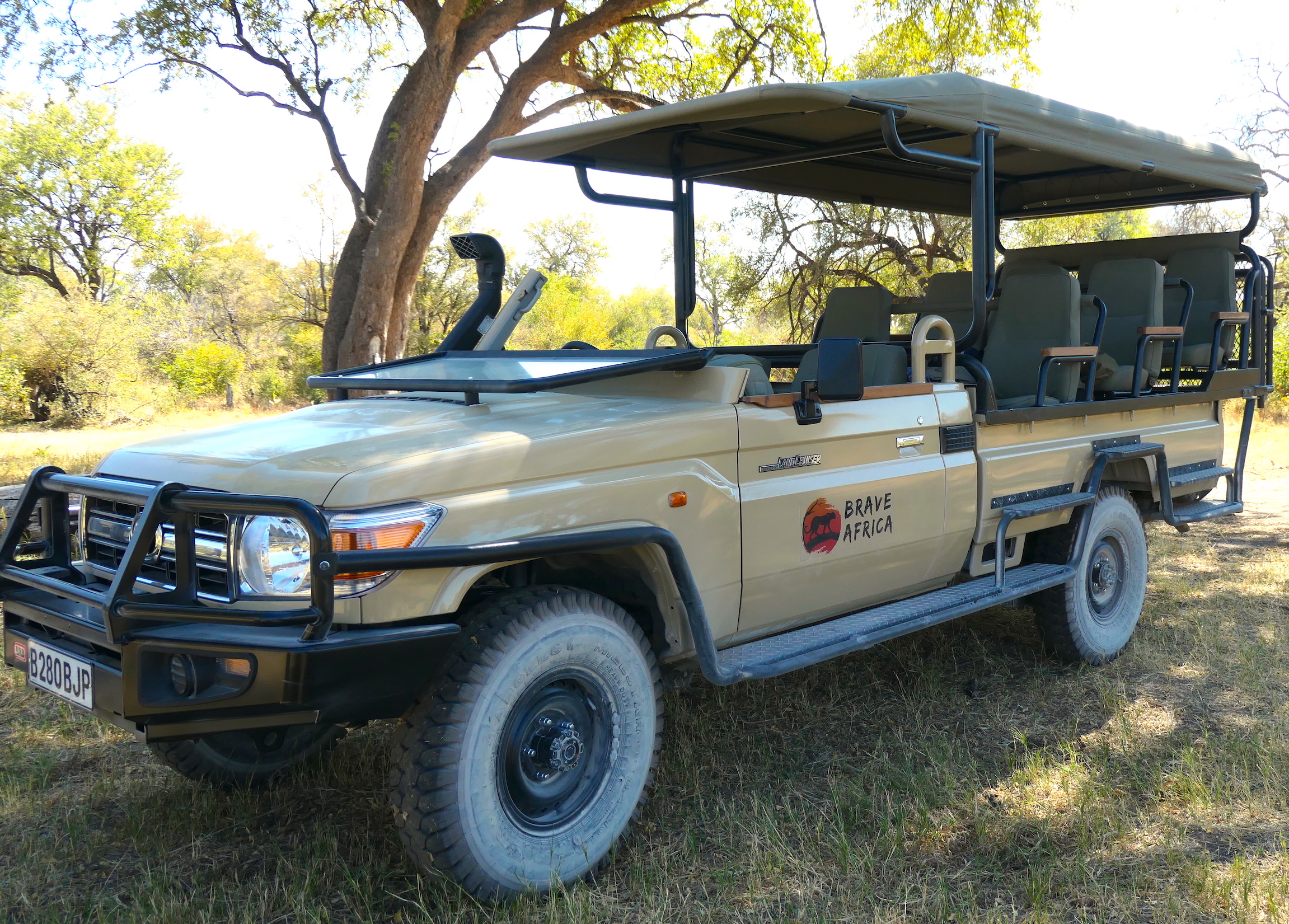
Every Brave Africa safari is custom-built to handle the Botswana Bush. The stadium-style seats in the back are open to the environment but still protected by a canopy from the sun and rain. There’s a snorkel that allows us to go through deep water, custom tires/wheels, a fold-down windshield, USB charging ports, a storage cooler, and more.
1. Toyota Land Cruiser
Twenty-five years ago, the Land Rover was the standard safari vehicle. But as soon as the Toyota Land Cruiser entered the market, it became the new Toyota safari truck, and the game changed forever.
Toyota Land Cruisers are incredible vehicles that can handle the muddiest of conditions without getting stuck. It’s a powerful and dependable vehicle that’s known for exceptional performance, reliability, and durability. It offers a smooth ride even in the toughest of conditions, and it can go for days on a single tank of diesel, of which the safari car has two.
However, an off-the-shelf factory Toyota Land Cruiser isn’t precisely what you’re looking for either. It should be specially modified for safari conditions. These modifications include:
- A snorkel that can handle deep water
- Updated shock and suspension system for a smoother ride
- Increased ground clearance
- Updated wheels and tires specifically designed to handle the African Bush
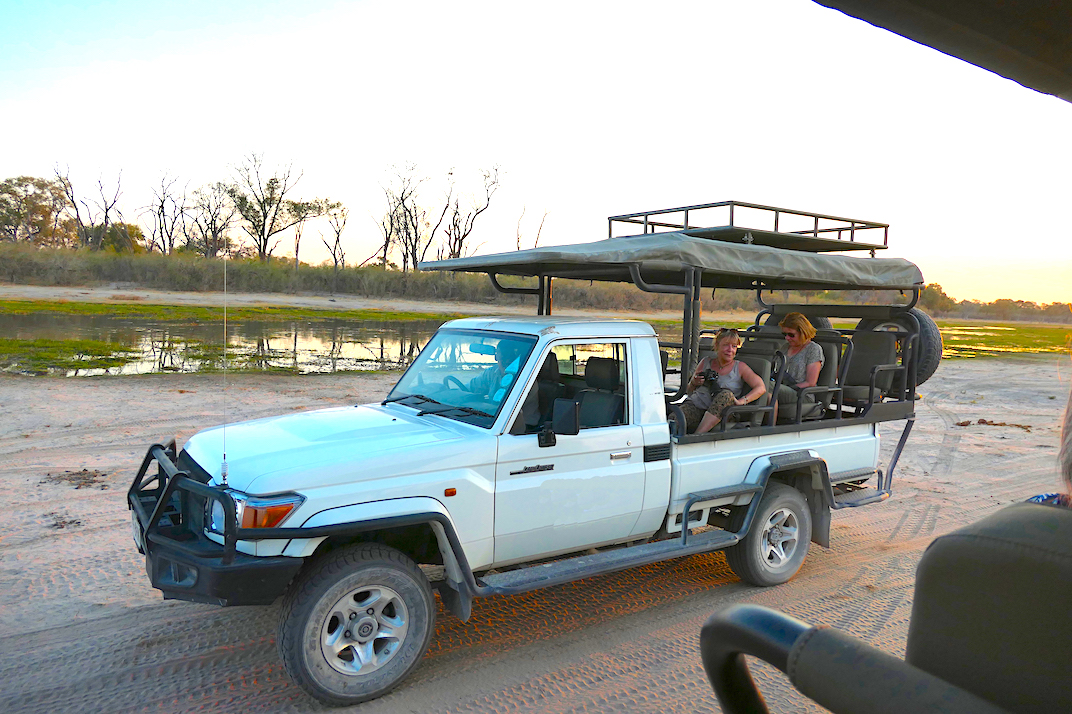
Notice the lack of modifications on this safari vehicle. There is no snorkel, which means deep water will be an issue. There also looks to be little to no modifications when it comes to the wheels/tires, the cab, and more. It’s basically a pickup truck with seating placed on the back.
2. Fully Open Vehicle
If you’ve done any safari research, you’ve probably seen tons of images of different types of vehicles. In Kenya and Tanzania, most safari camps and lodges prefer fully enclosed safari cars where you have to stand up for a clear view of the wildlife without windows.
However, in Southern Africa, including Botswana , you’re mostly going to find safari vehicles with a more open-air approach, but how open it is can drastically change your African adventure.
Open Seating in Your Safari Vehicle
First, let’s talk about your seating area. There are completely open safari vehicles—no windows, doors, or frames blocking your view. Then, some vehicles claim to “protect you from the elements” while at the same time changing how you experience the Bush.
How much access you want to the animals is up to you, but we think the more open, the better. We feel that having something between you and the animals takes away from the magic of your African Adventures. It transforms your experience into something more zoo-like and less “in your face” majesty.
A closed seating area will mean that you’ll deal with less dust, but we think that’s part of the safari experience. We’d rather breathe in a little dust and maybe get wet, but be right there ready and waiting to watch a lion walk by our car or hear an elephant trumpet at us.
However, no matter how open the car is, it’s the seating that matters too. You do not want to be in a car with middle seats. Ask your safari operator how many people they’ll allow per car. We max out at six occupants so that everyone has a window seat, and no one is stuck with a lousy view.
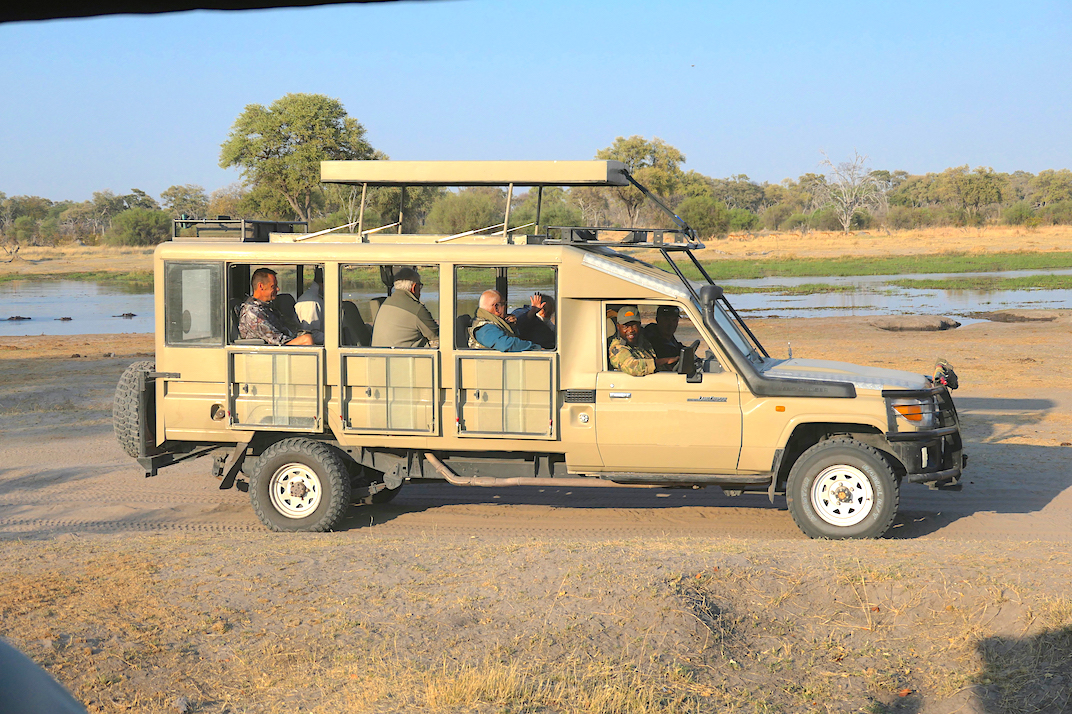
This safari vehicle offers a closed off seating area, which means an obstructed view of the wildlife as well as a hot backseat experience. More likely than not, there’s no air conditioning in the back, and with a closed-off front cab, very little chance for a breeze. That’s tough. And when it comes to birding, this car will not be helpful.
Open Cab Safari Car
Second, let’s talk about the driver’s cab. Even in safari cars where the entire seating area is open to the elements, you might find a situation where the cab is closed. This is definitely something you DO NOT want.
A closed cab means you are closed off from your safari guide. Yes, he or she might still be able to talk to you by leaning out the window, but it’s going to be ten times harder to interact with them, which will greatly detract from your experience.
Your safari guide is essential to your time in the Bush. They’ll explain animal behavior, unique plants, and more. Think of it like being in the car with a live Wikipedia page that can answer all your questions on the spot without the Internet.
Now, imagine that to get to your Wiki page, you had to click ten different buttons to find the answer you wanted. That would get annoying quickly, right? That’s the same with a closed cab. If you don’t have direct and easy access to your guide, you won’t be able to hear what he or she has to tell you throughout your drive, and you’ll lose out on an incredible amount of insight.
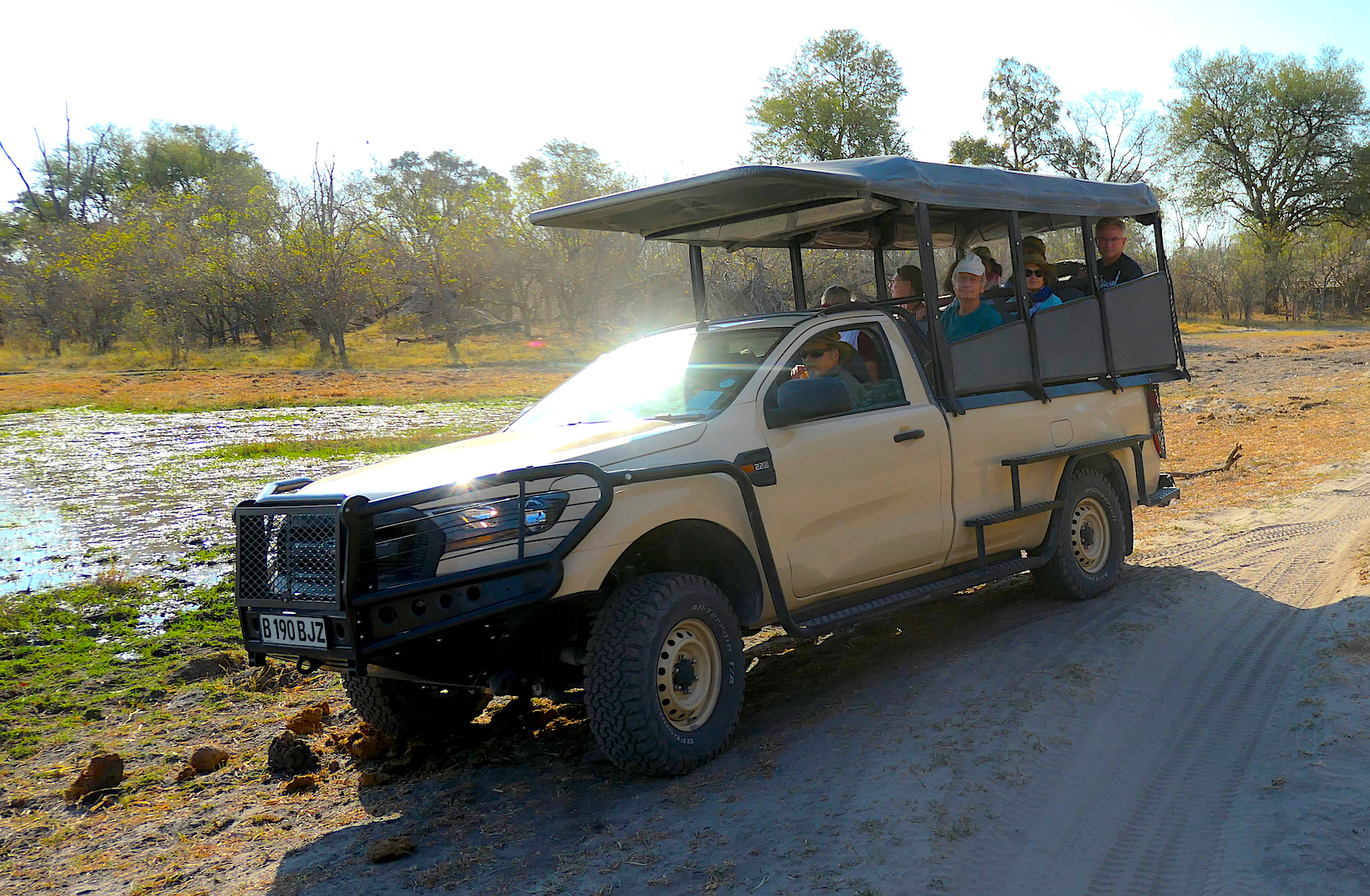
This safari vehicle has a closed cab, which makes it difficult for guests to talk with their guide for a far less personal experience. It also has a very closed in seating area. Those guests in the back row have very limited viewing. Also, notice the middle seat…that’s a lot of guests in one vehicle.
3. Canopy Cover
Now, a fully open vehicle is excellent, except when you don’t have a canopy! Yes, Botswana might be a desert, but that doesn’t mean it won’t ever rain, and when it rains, you want a canopy to keep you from getting soaked. But even when it doesn’t rain, a canopy is fairly essential.
The sun is hot and in Botswana—with an average of 3,300 hours of sunshine every year—and that means you want to be in the shade as much as possible. A fully open cab without even a canopy will mean you have no protection from the elements.
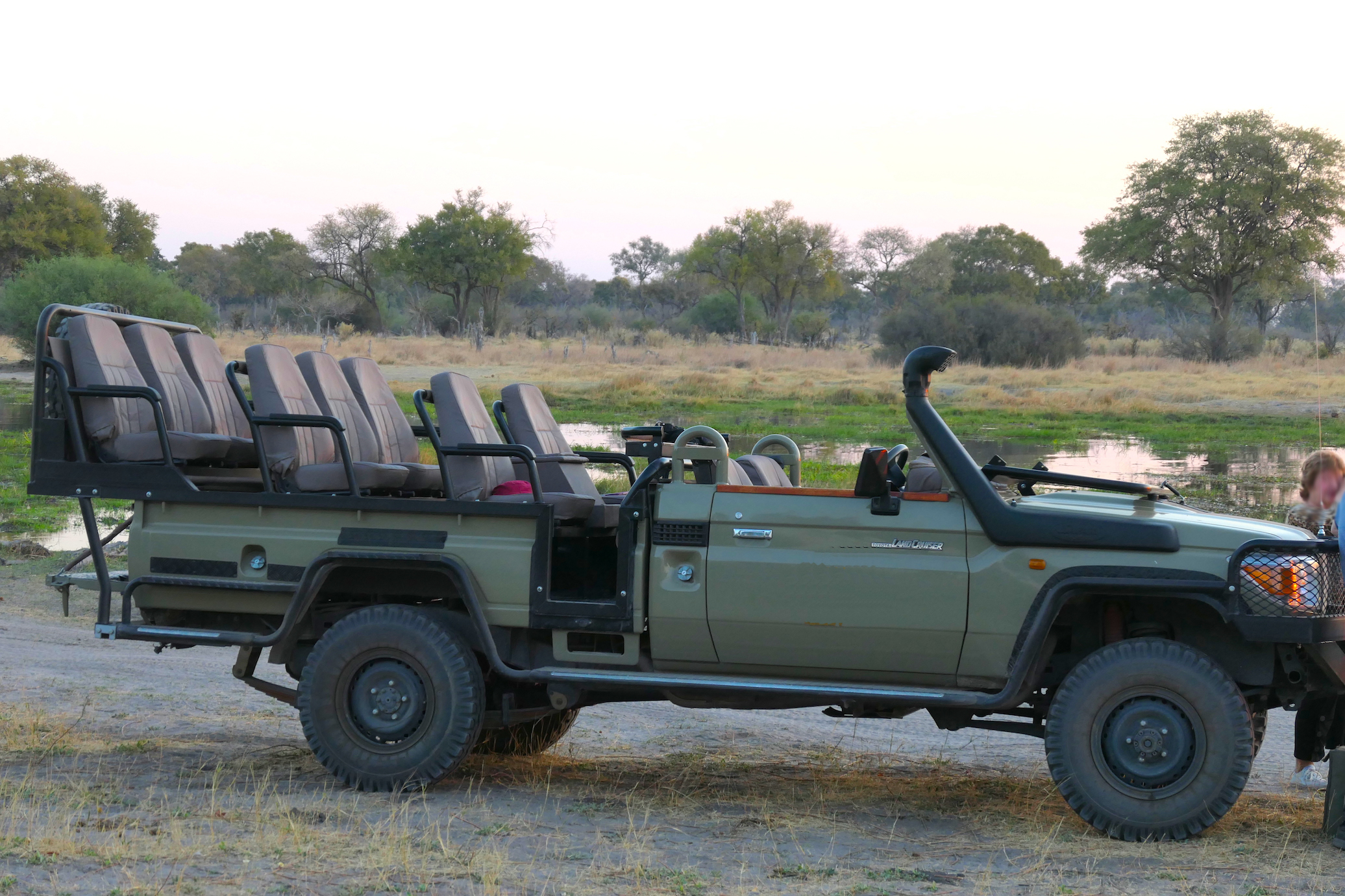
Without a canopy, guests in this vehicle will have no relief from the sun or rain.
4. Safari Car Power Charging
Access to power is critical even in the middle of the Bush. Between our guests’ cameras, phones, and other technology, we know that having the ability to charge your devices is essential to an enjoyable experience. And with 12- to 13-hour game drives, relying on only battery power can be nerve-wracking.
That’s why every Brave Africa safari vehicle offers two USB charging stations at each seat, so you can charge two items at once throughout your daily game drives. You’ll never have to worry about going without power.

Every Brave Africa safari vehicle offers 2 USB ports per seat. Here’s a picture of the four slots for the two front seats.
5. Refrigerator System
When it’s 35 degrees Celsius (95F), it’s way too hot not to have access to ice-cold water, juice, soda, or beer to cool you down in the heat. So, before you choose your African adventure safari, ask the operator if they have a refrigerator system in their safari car.
In the middle of Brave Africa’s first row of passenger seats, we have a large refrigerator that can hold around two dozen cold drinks. This means that no matter how far away from camp you are, you can still enjoy crisp cold drinks on a blistering day.
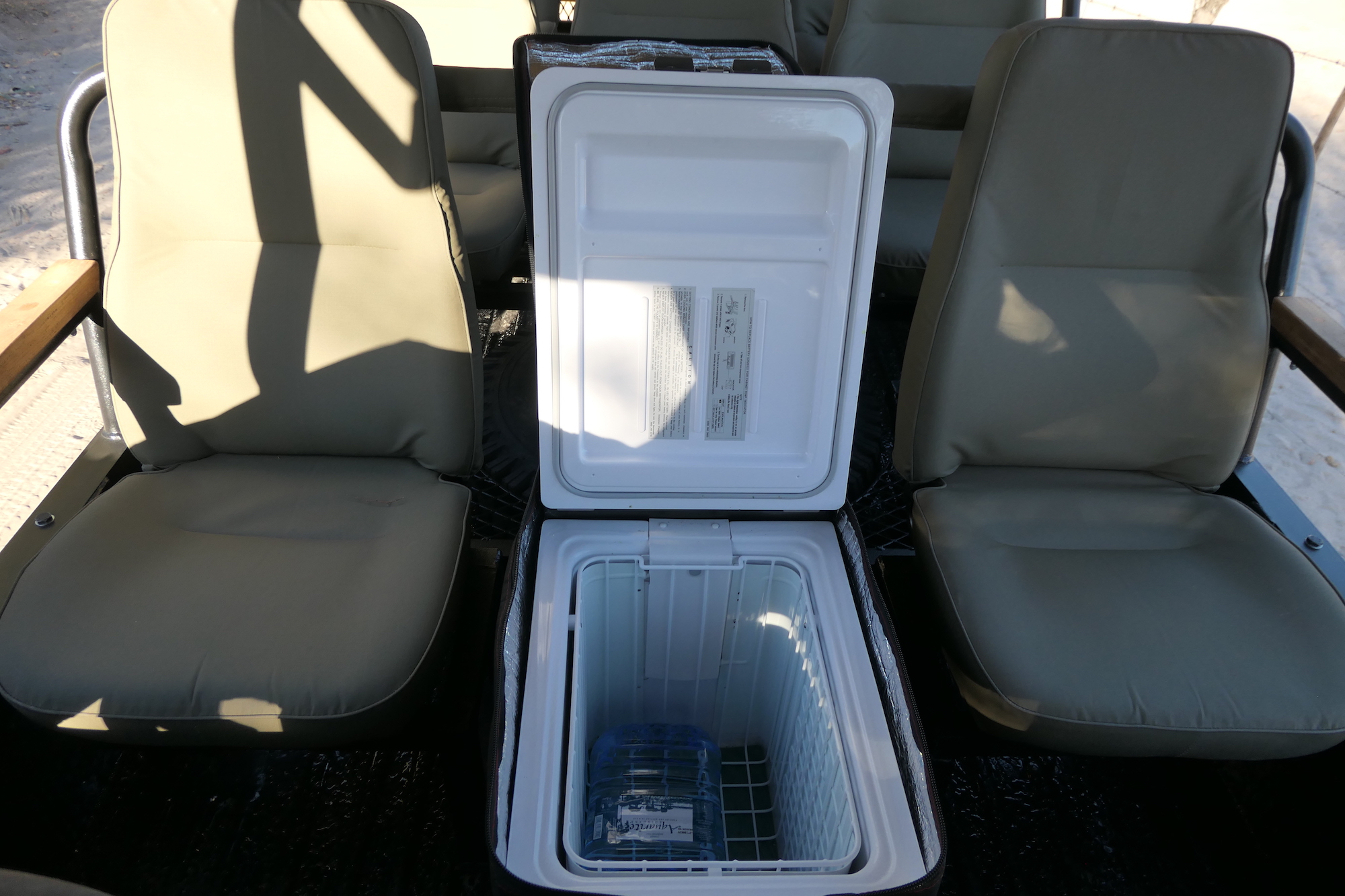
Between the first two seats, we added a cooler for ice-cold drinks and food on every game drive.
6. Storage Options
When you’re on all-day game drives , you need to be able to bring a lot of stuff with you to have a good experience, and that means you need storage space. You need room to store your day bag with your camera, phone, spare jacket, and other personal items. There also needs to be room for snacks, lunch, tables, chairs, and other items you might need on your all-day drive.
At Brave Africa, we max out our vehicle at six guests, so there’s plenty of room to leave your bag. In the back two rows, you can place your stuff in the middle seat. In the front row, you can put your items on top of the refrigerator. There’s also plenty of room to put your bag at your feet as needed.
As for storage for tables and chairs, we’ve built on an extra storage rack on the back of the vehicle. This rack can be folded down or up and used to store guest luggage to and from the airport. We also use it to carry tables and chairs for lunch in the Bush—a requirement for every African adventure.

We built a custom storage rack onto the back of every Brave Africa safari vehicle. This rack can be used to store guest luggage, tables, chairs, and more.
Recent Posts
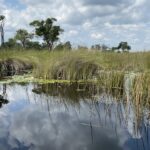
Follow us on Social Media
Travel Agents
DESTINATIONS
Getting Here
What to Pack
Safari Tips
SAFARI PACKAGES
10 Day Safari – Moremi, Khwai, Savuti
7 Day Safari – Khwai & Savuti
7 Day – Moremi & Khwai
- Meet the Team
- In the News
- Safari Itineraries
- Sustainable Travel
- Come With Us
- South Africa
- Happy Travelers
- Travel Advisor Portal
- Client Log In
Safari Vehicles 101

WHAT ARE THE TYPES OF SAFARI VEHICLES?
There are two main types of safari vehicles — open and closed. While open safari vehicles live up to their name, generally with three rows of tiered seating and completely open sides, closed safari vehicles are a bit more nuanced. They have closed sides (as you see in the picture above), but the tops pop open so safari-goers can stand up to get a better view. Windows also slide open so that travelers can take photos unimpeded.

LOCATION, LOCATION, LOCATION
The type of vehicle that will be used for a safari often has to do with WHERE that safari is taking place and is not just a random happenstance. The basic rule of thumb is that in Southern Africa (South Africa, Zimbabwe, Zambia, Botswana, and Namibia) you’ll find more open vehicles, while in Eastern Africa (Uganda, Rwanda, Kenya, and Tanzania), vehicles are more closed.

Well, in Southern Africa, most camps are in private concessions and thus have fewer rules and regulations, meaning they can have more open vehicles. In East Africa, there are more regulations about where open vehicles can be used — they’re not permitted when driving between national parks or even in some national parks (Ngorongoro Crater, for example). So, you won’t see as many open vehicles in East Africa.
Plus, any time you have a longer road transfer, you’ll be using a closed vehicle, since you really don’t want to drive for hours exposed to the elements the way you would be in an open vehicle.

ROAD TRANSFERS VS. CHARTER FLIGHTS
While there isn’t much opportunity for choice when it comes to which vehicle you will be using for your safaris, if you are in closed vehicles due to road transfers, it is sometimes possible to substitute charter flights, allowing you to do game drives in a camp’s (open) safari vehicles. But this varies greatly based on location, so if this is a concern, let us know and we’ll see how we can adjust!

PROS AND CONS
While, for the most part, we recognize that open vehicles are better suited for wildlife viewing, closed vehicles truly don’t take away significantly from the experience. It is a different experience, but you can still see and photograph the wildlife, and with the excellent guides we work with, you’re going to get up-close-and-personal with the animals either way. Maybe there are even a few advantages — like air conditioning (sometimes), protection from the elements, and even a refrigerator that keeps drinks cool for the hot afternoons.
When you’re ready to plan your trip, we’d love it if you’d reach out for our assistance! Click the button below to get started!
One Comment
Will be leaving to South Africa on 02.09.24 through Paris and including safari tour Looks like closed vehicles are more preferable..
Leave a Reply Cancel reply
Your email address will not be published. Required fields are marked *
Save my name, email, and website in this browser for the next time I comment.
Privacy Overview
A Tanzania Travelogue
- Safari Stories
- African Wildlife
- Travel Tips & Updates
- Where To Stay
- Places To Explore
- Giving Back
- Create Your Own Safari
- Contact a Specialist
The Best Safari Vehicle for Wildlife Viewing
Tanzania is a WIDE open space. When you go on an African safari and a game drive through the Serengeti, you’ll be spending a lot of time and covering a ton of land by car. So, the vehicle you choose to travel in can determine the ultimate success of your trip. Watch the video below to hear from safari specialists, expert driver guides and our past guests to hear why private close-sided vehicles are the best choice for a host of reasons.

Wildlife photographer and filmmaker Jeff Smith , takes you on a game drive through the hot African sun – through dust, mud and occasional rain, explaining how our Land Rover Land Cruisers pass the test of safari safety while getting our guests as close as possible to the action.
When you book a safari, you should inquire about what kind of vehicles you’re going to use because you’re going to spend a LOT of time inside of them.
Jeff Smith shares a scenario from his last trip to Tanzania to illustrate this point:
“The other day we were right by the side of the road where a lion had taken down a wildebeest. And those lions that were feeding on that wildebeest were no more than 7 feet away from the vehicle! But you’re IN this vehicle and that gives you a very good sense of security. Also, it doesn’t distract the animals. The animals see the vehicle as one large object. That’s why I’m somewhat against the open-sided vehicles that are starting to show up in the Serengeti because people can move around and reach out and you don’t feel as safe. And that’s probably realistic because you are NOT as safe. You are not as safe in an open vehicle from the elements, from the animals, from the dust, from the mud that gets thrown up sometimes, from the sun… so I think it’s an important thing to ask – What vehicle am I going to be using?”
From a safety standpoint, safari specialist Dawn Anderson explains that “if you’re in an open-sided vehicle, you’re guide is probably going to keep some distance between you and that animal.” There’s only so much the driver can do in this scenario. Their only way to keep you safe is to keep you further away.
Specialist Sharon Lyon agrees: “I would much rather be in a closed-sided vehicle with the lions or leopards right next to me than have to stay 25, 30, 50 feet away from a pride of lions. So, that’s one advantage. I feel safer and can get much closer to the animals.”

Aside from safety, comfort is another important aspect to consider. The open-sided vehicles are proven to be less comfortable because they are not all-weather vehicles.
From his last trip, Jeff Smith recalls:
“In the vehicles that Africa Dream Safaris uses, you can pull your shoes off, you can stand up on the seats and your entire torso is sticking out of the vehicle. You have a 360 degree view all the way around. If you don’t want to stand, you can sit down – it’s comfortable. It’s also quiet in there and it’s out of the dust – you can hear your driver whose going to be explaining things throughout and stuff you don’t want to miss.”

Local Tanzanian and expert safari driver Roman Desiderius explains why he prefers the type of vehicles we make use of:
“ADS vehicles are fantastic. You can remove the roof so guests can stand up and take photos at 360 degrees or whatever they want to do. When it rains and we put the roof back on, then guest can still use the windows to shoot out of for fantastic photos despite the rain. If I’m driving people who really prioritize photography, I think the open vehicles are not as good as the closed vehicles that ADS actually owns.”

“There’s different companies that offer different things so it’s really important to make sure that their vehicles match what you want to be able to do. Because you’re spending all this money to get out here and you don’t want to get out here and find out your ride is terrible.” – Chris Limberis (filmmaker / photographer)
Ultimately, the choice is yours. When searching for a company to be your host to the most magical place on earth, don’t be afraid to ask questions about each and every detail of your trip. It’s a trip of a lifetime after all and you’ll want to get it right.
Going on Private Sufari with you in June 2019 and am still so stoked, even though we are doing Hawaii and a Nile Cruise before. This tip has consumed all my energy since making the decision to book with you in late 2017. It has also consumed a bunch of money. But this trip is once in a once in a lifetime.Bought a new lense for my camera, and bought an iPhone X as an additional camera. Oh yes, I also bought a GoPro to record the entire adventure.
Can not wait for this to begin.

We specialize in private, custom-tailored safaris to Tanzania.

World's Best Safari Outfitters
National Geographic

A+ Reliability Rating
Better Business Bureau
Conservation Award
Tanzania Tourist Board
Humanitarian Award

Which lodging option best suits you?
Safari videos.
The Wonders of Tanzania
When To Go On Safari
Wildlife Abundant Game Drives


Browse through over 50 regions throughout Tanzania
- Serengeti National Park
- North Serengeti
- Lobo Valley
- Upper Grumeti Woodlands
- Lamai Triangle
- Bologonja Springs
- West Serengeti
- Ruwana Plains
- Lower Grumeti Woodlands
- Mbalageti River Valley
- Musabi Plains
- Central Serengeti
- Seronera Valley
- Seronera River
- Retina Pool
- Moru Kopjes
- Maasai Kopjes
- Makoma Hill
- Turners Spring
- Simba Kopjes
- Long Grass Plains
- East Serengeti
- Sametu Marsh and Kopjes
- Barfafu Gorge and Kopjes
- Lemuta Hill and Waterhole
- Lake Natron
- South Serengeti
- The Triangle
- Hidden Valley
- Kusini Plains
- Olduvai Gorge
- Matiti Plains
- Ngorongoro Conservation Area
- Lake Magadi
- Central Plains
- Lerai Forest
- Rumbe Hills
- Munge Stream
- Mandusi Swamp
- Gorigor Swamp
- Ngoitokitok Springs
- Lake Manyara National Park
- Ground Water Forest
- Acacia Woodlands
- Floodplains
- Lake Manyara
- Tarangire National Park
- Tarangire River
- Lemiyon Triangle
- Matete Woodlands
- Silale Swamp
- Burungi Circuit
- Kitibong Hill
Popular Stories

Antelopes of the Serengeti

Safari Packing Advice and Tips

The Bizarre, Quirky, Rare and Deadly

Safari Photography Equipment and Tips!

5 Must See African Birds
Similar posts.

Meet the Heart of Our Safaris: Our Guides

The VIP Experience

What’s In My Camera Bag?

Serengeti Wins Africa’s Best National Park For 4th Straight Year!

The Reopening of Tanzania

Tanzania Travel Update

Close Encounter With Giant Tusker Elephant

Tanzania Receives World Wide Travel Accolades


What cars do we use for our safaris?
Altezza safari cars.
What makes a vehicle a safari car? And, are all safari cars created equal? Does it really matter if the car for your safari is a quality vehicle, as long as it runs?
We are here to answer all your safari-related questions and steer you in the right direction.
A good safari car means a good safari!
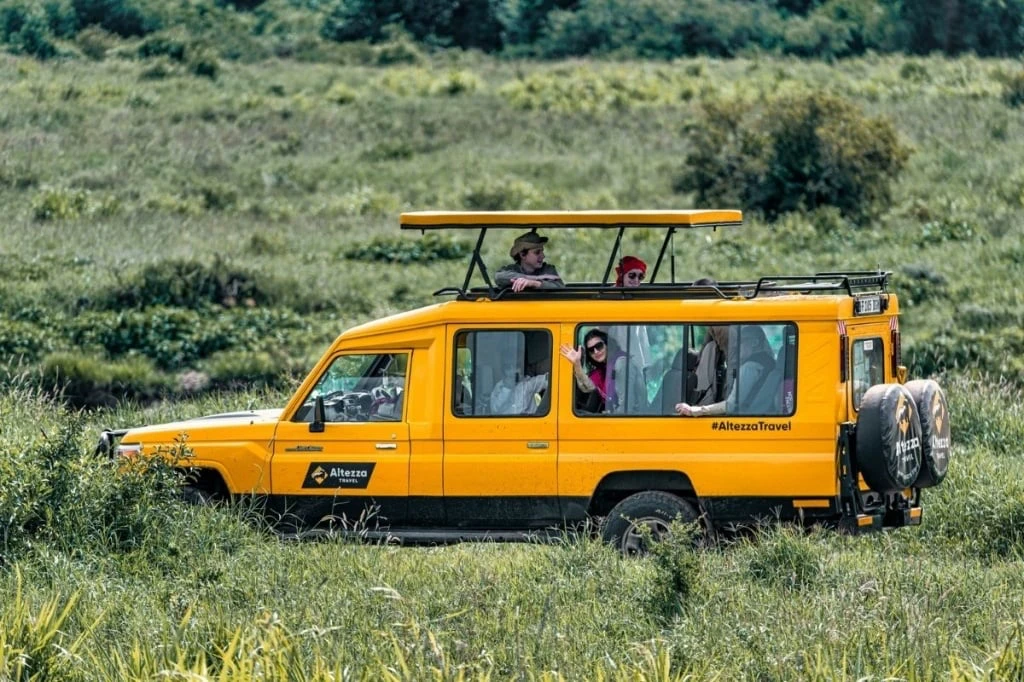
Why is a good safari car important?
The majority of safari in Africa and specifically in Tanzania are enjoyed inside special safari vehicles.Skimping on either of these may have disastrous results and ruin your safari experience.
Your safari car will drive along Tanzania’s highways to reach the national parks or remote areas for your tour.
Is your safari going to the Serengeti or Tarangire National Parks? These parks have some areas where your car may ford streams, drive up steep inclines or need to go through flooded or muddy sections - a quality safari car is absolutely essential for these safaris.
Are you planning to visit the Hadzabe tribe? Your safari car will navigate the rough terrain to arrive at Lake Eyasi.
Going to Lake Natron or planning to climb Ol Doinyo Lengai? You will certainly need a good safari car for the rough road to reach this remote location.
Basically, visiting any national park or game reserves requires 4x4 vehicles - under the current regulations of the Tanzania National Park Authority only the SUVs with a four-wheel drive are allowed to enter the protected areas.
Not only is a good safari car necessary for accessing some amazing destinations within Tanzania, but a good safari car should provide a level of comfort for passengers, and safely and conveniently transport your luggage and equipment, too.
What to look for in a safari car
A quality safari car should have the following:
- Be a new model with excellent suspension
- Comfortable seating
- A pop-up roof for 360-degree viewing while in the parks
- A working refrigerator for food/drinks along the way
- Charging ports to keep your electronic devices and cameras up-and-running
- WiFi internet
- Car radio for guides to communicate with one another throughout the parks
- The majority of safari cars have 6 seats in the rear, and a passenger seat beside the driver for a total of 7 seats.
All safari cars or trucks run by reputable operators should be well-maintained and have all required safety equipment; including a spare tire, a jack, a first aid kit and a fire extinguisher.
Altezza Travel’s safari cars
Altezza uses only the best safari vehicles Our professional drivers are behind the wheels of models imported from Dubai, remodeled specifically for Tanzania’s terrain, all of which were made from 2016-2022.
Altezza buys only new cars. We never take a risk buying used cars.
All of our vehicles include the features listed above, and more! When you travel with Altezza, you will be in a comfortable, well-designed safari car that is:
- Washed every day during your safari;
- Rigorously inspected at our own company garage before each and every safari;
- Various seating options - from four-passenger seating to six-passenger seating, so you can choose what is most comfortable for your travel group;
- Equipped with GPS trackers to monitor position of a car in real time;
- Radio communication - this allows our drivers to keep in touch with park rangers and other safari drivers and share where unique, rare animals have been spotted;
- There is reliable Wi-Fi in all our safari cars for you to share amazing shots from the wild with your nearest and dearest!
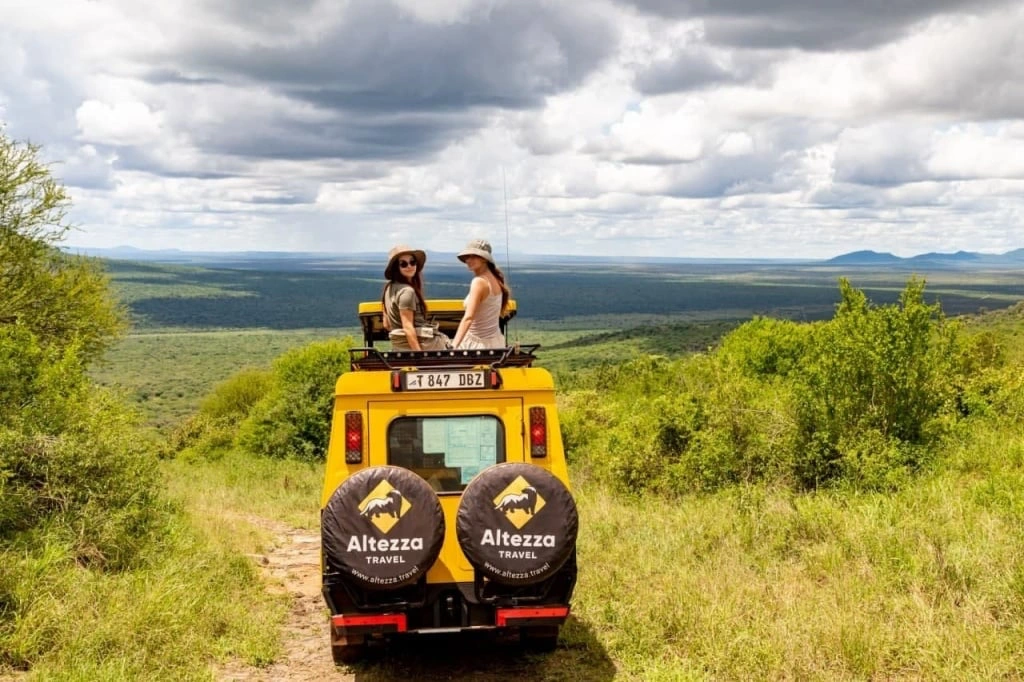
Moreover, our African safari vehicles are driven by experts - professional driver-guides. Our guides are familiar with the parks, have top-knowledge about Tanzania’s wildlife, and are safe and careful drivers with all necessary qualifications.
If you are interested to learn more about our safari cars, please contact us! We are happy to answer any of your questions.

Marvin Derichs, a Germany-based travel consultant for Altezza Travel, spent seven years living in Tanzania before returning to snowy Schleswig. Drawing from his rich experience, he now advises prospective travelers on exciting adventures in Tanzania. Marvin possesses extensive knowledge about Tanzania's mountains and popular safari parks and shares his insights with our readers.

You are using an outdated browser. Please upgrade your browser to improve your experience.
Looking for a unique destination for your next holiday? Try St Helena!
What to expect from your safari vehicle.
A useful guide to safari vehicles. Whats the difference, and where are they used?
04 May 2018
17 nov 2020.
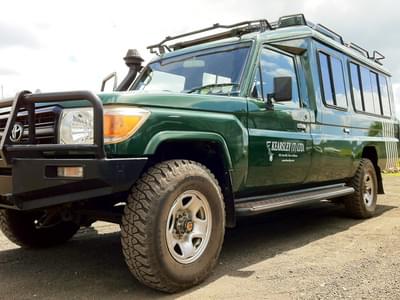
Safari vehicles vary from camp to camp, and country to country. In this guide we want to show you an example so you know what to expect. On the whole there are 2 main types of vehicle. 'Closed' vehicles, which are mainly used in Eastern Africa ( Kenya , Tanzania , Rwanda , and Uganda ). 'Open' vehicles tend to be used in Southern Africa ( Botswana , Namibia , South Africa , and Zambia ).
'Closed' Vehicles
Most Safari vehicles are Land Rover Defenders and Toyota Land Cruisers, seating up to seven guests plus your driver. They are designed to maximise wildlife viewing in the National Parks as well as comfort on the roads in-between the parks. The below seven seat vehicles have special features including window seats for all passengers, as well as a pop-up roof so that you can stand up and get an amazing unobstructed view of the animals.
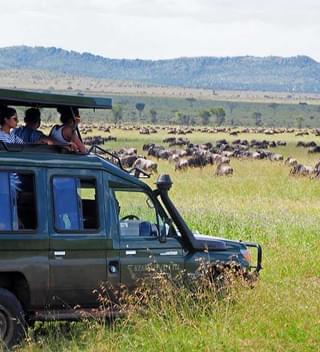
'Open' Vehicles
Where long journeys by road aren't required for your safari, most of southern Africa, open sided vehicles tend to be used. These 4x4's are normally Land Cruisers, or Land Rovers. Open sided vehicles have their advantages. It's much easier to capture photos and the experience seems much closer. If shade is needed most vehicles will have sunshades.

Whatever sort of vehicle you're in you'll have an amazing safari, for more inspiration, check out our 26 best safari ideas or call our team on 01768 603 715 and they'd be happy to help.
If you're planning you're researching your first safari, you might also want to take a look at our guide on 'where to go on my first safari ' or big five safaris.
Our Favourite Tailor Made Africa Holidays
Popular Holiday Ideas
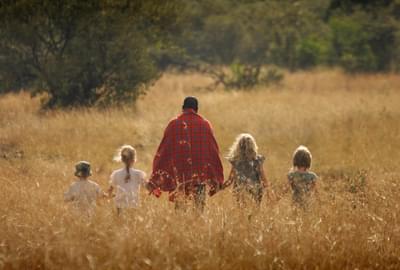
Classic Kenya Family Safari & Beach Holiday
- Diani Beach
- £5870 PP
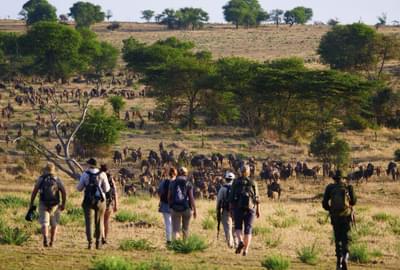
Walk, Mountain Bike & Drive Northern Tanzania
- £5495 PP

Luxury Masai Mara Safari & Zanzibar Honeymoon
- £3245 PP
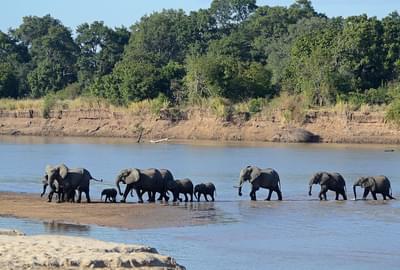
Luangwa and Lake Safari Adventure
- South Luangwa
- Lake Malawi
- £4945 PP

Rwanda Gorillas, Primates, & Landscapes
- Volcanoes NP
- £6075 PP
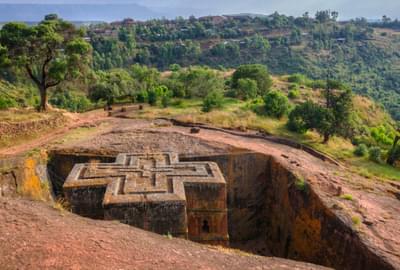
Historical Ethiopia
- Addis Ababa
- Simien Mountains
- £3515 PP
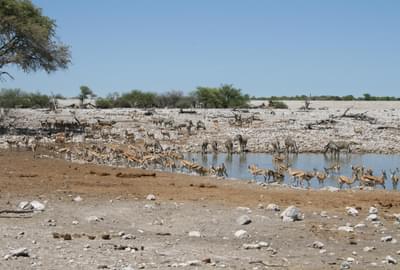
Classic Namibia Self-Drive
- £4715 PP
Start Planning Your Dream Safari
Speak To Our Experts Today

African Specalist

Africa Specialist
Call an expert on
01768 603 715
CONTINUE READING...
More Safari Blogs
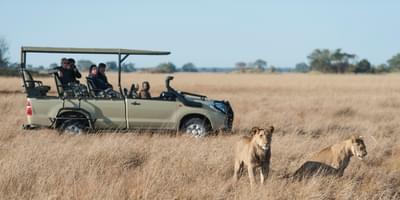
Where to go on safari 2024/25
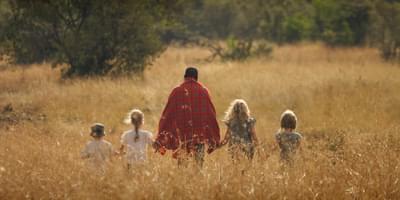
Best Family Safari Holidays 2024/25
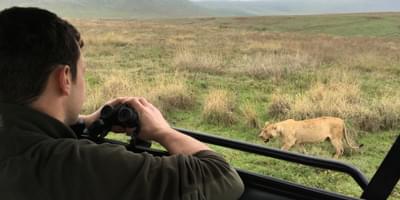
Jack shares his first safari experience in Tanzania
Far & wild customer reviews.
Adventure of a Lifetime in Kenya
Maria travelled to Masai Mara Safari in October 2023 on a trip organised by Ben .
It was SO NICE to have someone else do it for me.
Cathy travelled to Tanzania and Zanzibar in December 2023 on a trip organised by Alistair .
100% value for money
Adam travelled to Kenya in January 2024 on a trip organised by Ruth .
I've already recommended Far and Wild to a couple of friends
Paula travelled to South Africa in December 2023 on a trip organised by Alistair .
A dream to visit Mum's birth place!
Christine travelled to St Helena Holidays and South Africa in December 2023 on a trip organised by .
I didn't realise my high expectations could be so easily exceeded
Hannah and Elaine travelled to Kenya in November 2023 on a trip organised by .
Plan with an expert
Have a look at our original holiday experiences and then contact us with your brief, or call 01768 603 715
A tailor-made itinerary just for you
Our experts will send you a detailed holiday itinerary specified to your desires. It's our service promise to you.
Value guarantee
Tailor-made doesn't mean expensive! Ask about our price promise and book with financial security.
Thank you for making an enquiry
Our travel experts will be in touch soon. Feel free to call us on 01768 603 715.
Start planning your next adventure
Give us a call on 01768 603 715 , chat with an expert instantly on WhatsApp or fill in the form below and we’ll be in touch.
Tell us about you...
Tell us about your trip….
Please enter your comments.

Types of Vehicles used on African safaris
The type of safari vehicle you will use while on safari depends on the style of safari you choose and the destinations or locations you will be visiting. There are two major types of safari vehicles namely open and closed 4 x 4,s with a pop-up roof. Let’s look at each one of them in reference to safari style and destination where they are used.
Eastern Africa safari Vehicles
Most parks in Kenya and Tanzania permit close-sided vehicles for safety purposes, especially while driving for long distances in between parks such as from Serengeti to Ngorongoro crater where roads may be bumpy and dusty as well as within parks where some wild animals like baboons and cheetahs are likely to jump into the car. Close-Sided vehicles are considered more convenient when it comes to rainy or windy weather as well as for transfer between lodges to the airstrips within national parks.
Vehicles Brands and capacity.
The most popular brand of safari cars is the Toyota 4×4 Land cruiser modified to a 7 seat capacity which guarantees each occupant a window seat for ease of wildlife viewing the pop roof allows occupants to stand and enjoy a 360 degrees game viewing experience and capture that perfect shot from any direction. Vehicles are able to withstand the African bumpy roads in the jungle at the same time providing enough comfort in the African jungle. You also have a power supply system where you can charge your cameras or phones. Other important features include a mini-fridge cooler where you can keep drinks or medication cold all the time.
Open-sided 4WD safari vehicles.
These types of Safari vehicles will mostly be used for fly-in safaris and within the Lodge or Camps within the private concession allowing guests to get up-close to nature In most cases, the vehicles will be used for special game viewing experiences such as photography in private reserves in southern Africa and viewing the wildebeest river crossing at Serengeti mara ecosystem vehicle brands will include Land lovers and 4×4 Toyota Land cruisers. These open vehicles also come with a removable roof that can be pulled on for shelter in case of unexpected rains and scotching sun In addition, open-sided game drive vehicles in South Africa will include a tracker seat mounted on the front of the car. The idea is to allow the tracker to guide the driver in tracing wildlife Amet adventures provides both options of safari vehicles depending on the type of safari you and location you choose. while open-sided 4WD remains our favorite for our wildebeest river crossing safari experiences.
Leave a Reply Cancel reply
Your email address will not be published. Required fields are marked *
Save my name, email, and website in this browser for the next time I comment.
6 Things to Consider When Choosing a Safari Car
The car you choose for a safari is key to enjoying your trip . Your safari car is the heart of the entire trip because you will literally spend the whole trip in it.
Most tours and travel companies have invested a lot in their safari vehicles to ensure they provide the best services to you. However, sometimes you may be unlucky and end up in a terrible vehicle.
To avoid having a bad experience when on safari and maximise on the experience, we have highlighted six things to consider when choosing a safari car.
1. The type of vehicle
One of the most recommended cars for a safari is the Toyota LandCruiser . Toyota Landcruisers are amazing cars. They can easily handle rough terrains and swampy areas.
These cars stand out as safari vehicles because they are powerful, durable, reliable and offer exceptional performance. Even though they are fuel-efficient enough to use one tank for a couple of days, they come fitted with two tanks.
Additionally, you can modify the Toyota Landcruiser specifically for safaris. Amongst the features, you should look out for when picking the car are:
- Tyres and wheels designed for the rough terrains
- A car fitted with a snorkel to enable it to handle deep waters
- Great shock and suspension system for a smooth ride
- Increased ground clearance.
2. Select an open seating or closed cabin vehicle
When researching on safari cars to select, you may have seen different designs of vehicles. Some are fully open while others are partially open forcing you to stand to see the views clearly. You can choose either of them depending on your preference.
An open seating safari car is one where the vehicle has no doors, windows or frames blocking your view. On the other hand, a closed cabin vehicle is more suited if you want to have privacy away from the driver or tour guide.
The amount of access you want to the animals will depend on you. If you love animals and want an unobstructed view, an open seating car is more advisable.
3. The car should have a canopy cover
Having a fully open car is great until it starts raining or the heat gets unbearable. When choosing a safari car, confirm that the canopy cover is available and in good condition. It will come in handy when it starts raining or generally to provide a bit of shade while you enjoy your drive.
4. Safari car power charging system
When on safari, there are usually little to no access to charging stations. It is essential to have your cameras, phones and other devices charged from time to time. Therefore, you need a vehicle with a power charging system.
A game drive is usually around eight hours and your devices might die. A car with a power charging system can really put your worries to rest.
5. Refrigerator System
When choosing a safari car, make a point to ask the operator if they have a cooler or refrigerator. On a hot day, you will probably grab a cold bottle of water or soda at least once to quench your thirst.
With a refrigerator, you will not need to worry about the length of the game drive because your drink needs are sorted.
6. Proper storage options
When on a game drive, chances are you will have your meals in the wild. You need a spacious vehicle to hold your portable picnic table, chairs and foodstuff. Besides, you can always assemble them when it’s time for a break and have a meal in designated areas.
You will also need the space to keep your personal items like bags, chargers, gadgets that are not in use and even jackets. Additionally, you need enough space to move around and take photos and also just to travel comfortably.
Therefore when picking out a vehicle, take your time to look around it and ensure it’s spacious enough. Remember you will be spending close to eight hours in it.
Parting shot
A safari car is not just a four-wheel-drive vehicle. It is customisable to handle off-road adventures. Picking the right vehicle for a safari can make or break your trip. However, if you use the above checklist of unique features, you are likely to enjoy your safari trip.
Get our emails
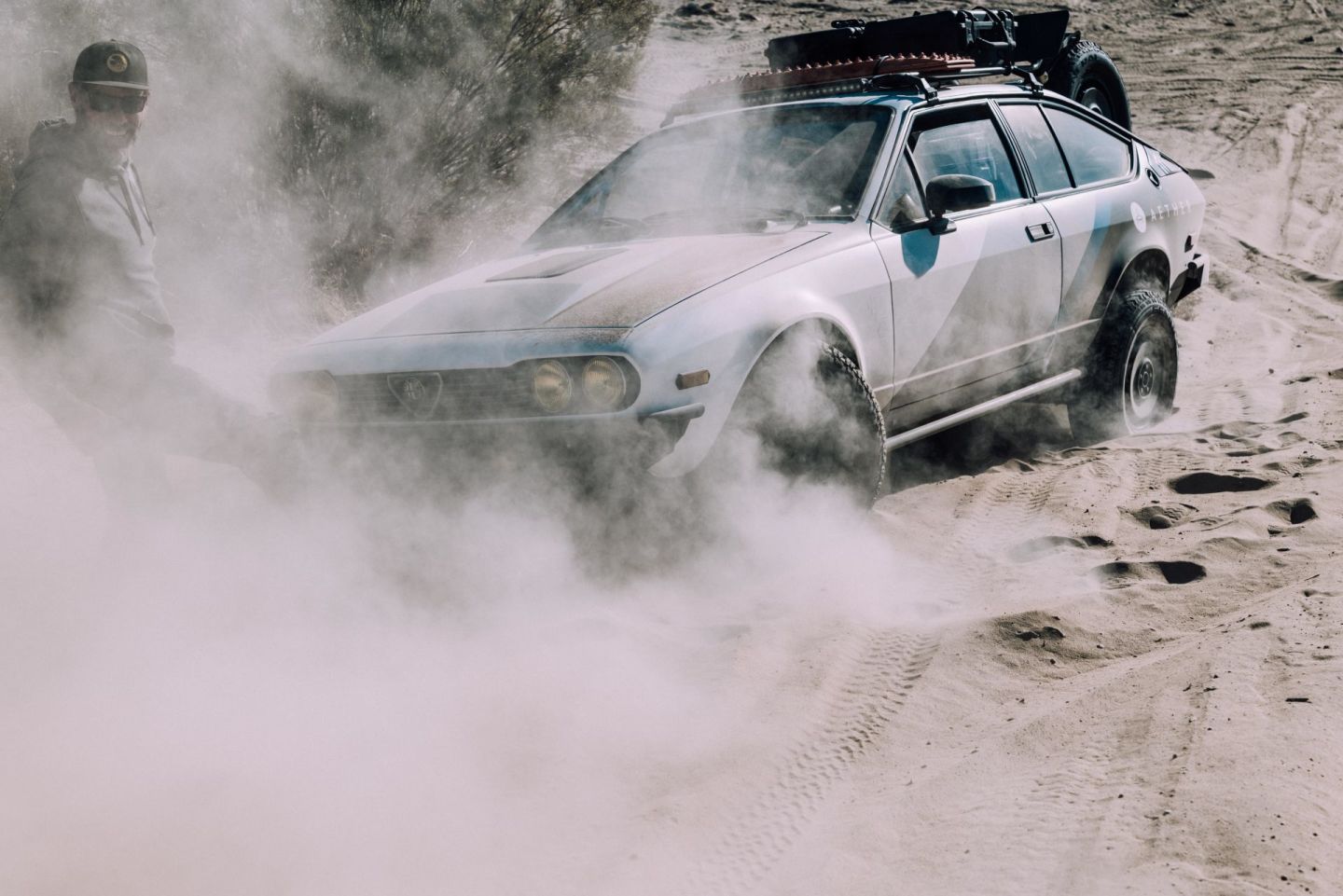
Roundup: Enthusiast-built safari cars that will inspire you to hit the dirt roads
Written by Daniel Lackey
The recipe is fairly simple: take an orthodox car, add unorthodox ground clearance, all-terrain tires, and hit the dirt.
Inspired by the East African Safari, and in particular, the Martini liveried Porsche 911s that took part in 1978, the popularity of the ‘Safari Build’ continues to climb to heady new heights. While specialists like Leh Keen and Richard Tuthill craft best-in-class offroad Porsche platforms ranging from FIA legal rally cars to the creative and conceptual, the craze has been seeing enthusiast-built projects surface left and right.
Although the Porsche 911 is the most prominent platform, the off-road road car concept can be applied to just about anything. With a splash of Group B and a pinch of Baja 1000, there are a few people who have diverged from the traditional path to create some truly unique vehicles. Perhaps the genre's newfound popularity is due in part to our eagerness to get out of our homes and into the wild following the pandemic restrictions, or, perhaps we feel the need to flee the heavy traffic of our crowded city streets. Either way, it looks like the Safari build is here to stay.
We scanned the interwebs and Instagram to find some of our favorite builds which you can browse and follow below:
Alfa Romeo GTV: Dropped Alfa
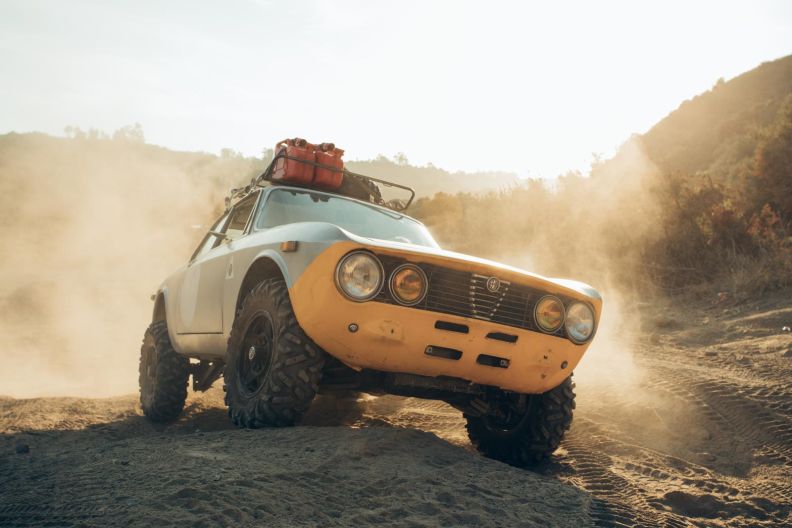
The car: Dropped Alfa | The photographer: Jeff Stockwell
Moving a little off-piste, I’d like to introduce you to the ‘Dropped Alfa’, a 1974 Alfa Romeo GTV aptly named after it fell off the back of a truck while in transport. Prior to being ‘dropped’ this Alfa Romeo was built for carving the canyons outside LA. After the drop, it remained badly beaten until brothers Iliya and Nikita Bridan, of Oil Stain Lab , came up with a plan for its reincarnation.
The twins, who both work as designers, discussed many potential plans but settled on a Safari build, after all, they couldn’t damage it any further by taking it off-road. The Alfa lent itself surprisingly well to the conversion. Lifting the suspension proved to be straight forward and the body could accommodate large tires without modification. The tuned engine is better suited to blasting through the desert than climbing steep trails. The car was developed over time but proved so popular that it led them to construct a follow-up Safari build.
I Am Detailing's BMW E30 325ix

The car and photo: Jakub Marek (I Am Detailing)
Expert car detailer Jakub Marek spends his days preparing some of the world's most special cars for premier concours displays. In his free time, he does the exact opposite. After owning over 20 BMW 3-series, he took this 325ix almost completely apart and built it into a off-road capable machine for the Gambler 500 in less than a week (yes you read that correctly). This included making a custom skid plate on front to protect oil cooler and oil pan for the upcoming event.
After servicing the engine and brakes and adding 27/8.5-14 tires, Jakub proceeded to drive the car from LA to Oregon just in time for said Gambler 500 event and the car performed flawlessly.
Alfa Romeo GTV6: Aether Alpine Alfa

The car: Aether's Alpine Alfa GTV6 | The photographer: Shayan Bokaie
Following the success of Dropped Alfa, the Bridan brothers were commissioned by Aether Apparel to build another Safari car. Aether wanted something unique and discussed many potential platforms including a Porsche 968, but the decision was made upon the discovery of a low mileage Alfa Romeo GTV6. Work began immediately. Concept drawings were realized in 3D while they attended to the Alfas electrics and mechanicals.
The rear suspension of the GTV6 is a complex affair with de Dion tube, trailing arms, inboard disc brakes, and a 5-speed transaxle. A simple lift wasn’t going to be possible. The rear end was 3D scanned so components could be designed and manufactured to lift it properly while retaining the correct geometry. The results are simply exquisite, a properly engineered car that can handle off-road with an equally arresting aesthetic that complements Giugiaro’s original design.
Meet the writer
Daniel Lackey is a long-time photographer, automotive writer, and Porsche Carrera Cup GB Team Manager for CCK Motorsport. Needless to say, he keeps pretty busy when not contributing to Marqued!
Stay up-to-date with the latest action and stories on Marqued's Instagram and Facebook pages.
Comments ( ... )
What to read next.
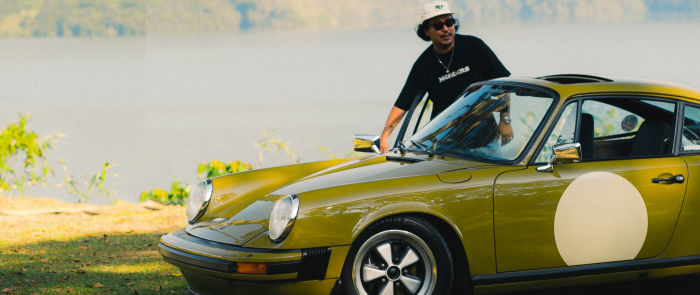
This Malaysian Porsche 911 went from scrapheap to showstopper
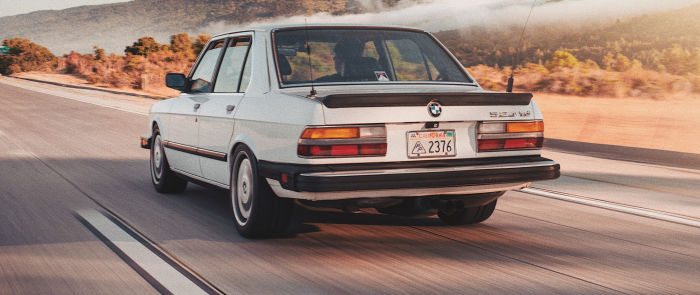
Enthusiast Roundtable: The BMW E28 is a classic driver for the modern world
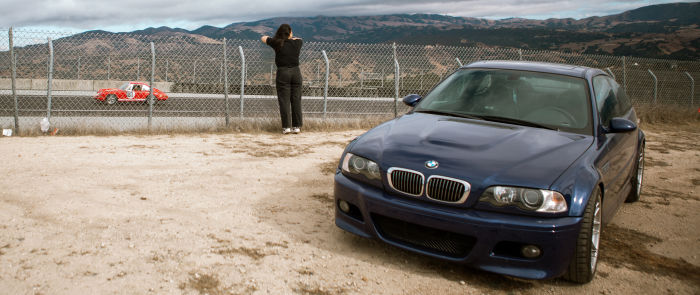
How Rennsport Reunion 7 transcends Porsche as the ultimate enthusiast gathering
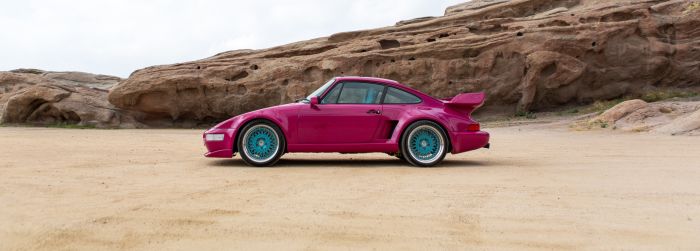
Meet a few of Porsche Classic's finest winners from this year's Restoration Challenge
Suggested listings.

1980 Triumph
TR8 Convertible 5-Speed
Eldersburg, Maryland 21784
NaN days left
Current bid :
Time remaining :

1980 Mercedes-Benz
280SL (Euro)

1960 Porsche
356B 1600 Super Coupe
Soulsbyville, California 95372
Before you get started

What is a safari car?

A safari in Africa is a very special type of vacation. The word “safari” literally means journey in the Swahili language, but the name has become associated with a specific type of trip that takes visitors to Africa’s large savannah plains to see the pristine nature and wildlife Africa is best known for. Here, the impact of human activity is at the bare minimum, and one can truly feel that they are in the wild, experiencing life as it has been for millenia. These areas are known as “National Parks”, and this is exactly where one may see nature at its rawest and wildest.
Tanzania is one of the best countries for a safari because the national parks of Tanzania have the largest number of wild animals in Africa, and, possibly, in the world. In recognition of Tanzania’s conservation efforts, Ngorongoro Conservation Area and Serengeti National Parks have been listed as UNESCO World Heritage Sites.
A safari experience in Tanzania is very different from neighboring countries, not only because of the parks, but also because of the style. This East African country seeks to attract high-end tourists, and for this reason the tourist infrastructure there has been developed in a way that attracts tourists who value comfort.
Safari vehicles used by Tanzania tour operators are no exception. In this article we discuss what is so special about them.
When planning your African safari adventure, it’s essential to consider the wide range of safari resorts and accommodations available. South African safari resorts offer luxurious and comfortable options for travelers to unwind and relax after a day of thrilling wildlife encounters.
Safari vehicles in Tanzania
Most of the safari cars in Tanzania are modified Toyota Land Cruisers. They are imported from Dubai, adjustments are made to make sure that their performance in the savannah is superb. This is a big industry here – there are many large workshops doing nothing else but modifying newly imported Land Cruisers.
Modifications are usually done to the seats, roof and color, and sometimes unseen body of these vehicles, not only to make them more comfortable for tourists, but to ensure they are hardy enough to withstand the rugged Tanzanian roads to see the most sought-after animals.
A modified Land Cruiser seats seven tourists and a driver guide for a total of eight passengers. At the same time, some tour operators prefer limiting the number of seats to five, so as to ensure that there is enough space to stretch legs and get the most comfortable safari experience. The seats are ergonomic and recline to ensure more comfort on the long trips through the pristine African savannah.
The roofs of Tanzania safari vehicles have a pop-up hatch so that safari-goers may stand up to have a 360-degree view of the savannah. It is especially convenient in the areas packed with animals or for epic panoramic photos.
It is not uncommon during a safari to see a lion lounging in the shade on one side of the vehicle, and a giraffe nibbling leaves on the other side, so a regular car window will not suffice. Opening the roof makes it possible for all passengers to have a great view of all around.
After all structural modifications are completed, to-be safari cars are then re-colored. The most popular color choices are khaki or dark green, which are selected because it helps them to blend better into nature. Some operators, however, decide to paint the cars in bright yellow colors for them to stand out among other vehicles in the park. The visitors are particularly happy with such a choice – the photos in their Instagram feed become really special.
What comfort specials may one expect to find in a safari car?
Nearly all safari trips take several days to complete. Some journeys to Serengeti and other large parks may last even a week or even more. For this reason a safari vehicle is equipped with certain features to make travel more pleasant and comfortable.
These small perks are:
Fridge with cold drinks
Most reputable tour companies have a small fridge in their safari cars. There you will find a variety of refreshments – sodas like coca-cola and fanta, beer and water. Keeping yourself hydrated in Africa is also important for health concerns, and taking several sips every hour is a good idea. The fridge will keep the drinks pleasantly cool, and the tour operator will make sure that there are enough drinks for everyone.
Tanzania has surprisingly good internet coverage, and almost all of the new safari cars have portable Wi-Fi adapters. Don’t expect to be able to stream live, but it will certainly be enough to post a picture or send a WhatsApp message to your family.
The coverage is pretty reliable in and around Arusha city, the main safari hub of East Africa, from where you are likely to begin your trip. In the national parks signal may sometimes disappear, especially in the spacious Serengeti – mobile data operators haven’t constructed the connection towers everywhere yet. But you are sure to find enough service in-and-out throughout the day.
Portable Chargers
Because most visitors have photographic equipment and other electronic gadgets with them, there are several 220v chargers with USB ports in a safari vehicle. The sockets are powered by the engine of a vehicle, making charging your mobile phone or a photo camera possible at all times.
It is all about comfort
A safari in Tanzania is very different from wildlife experiences in neighboring countries, and the specially-modified safari cars are one of the reasons for that. While in Kenya, for example, some of the safari adventures are organized in small, but thickly packed minibuses, you will never see such a thing here in Tanzania. Safaris in Tanzania are all about comfortable and exclusive experiences. Here the operators cater to luxury and midrange visitors and the safari vehicles are modified accordingly.
However, there is a small pitfall here – some operators still use old Land Cruisers, produced in the 1990s. Though these cars are still fit for the rough roads to the savannah, the experience will be somewhat different from what one may expect. Hence, when booking your safari adventure, it is not a bad idea to ask about the year of manufacture of the safari cars.
Change City
Pick from popular cities, 2021 tata safari vs rivals: specifications comparison.
With the Tata Safari’s launch just around the corner, we see how it compares to its rivals on paper.
Published On Feb 10, 2021 08:00:00 AM
56,908 Views
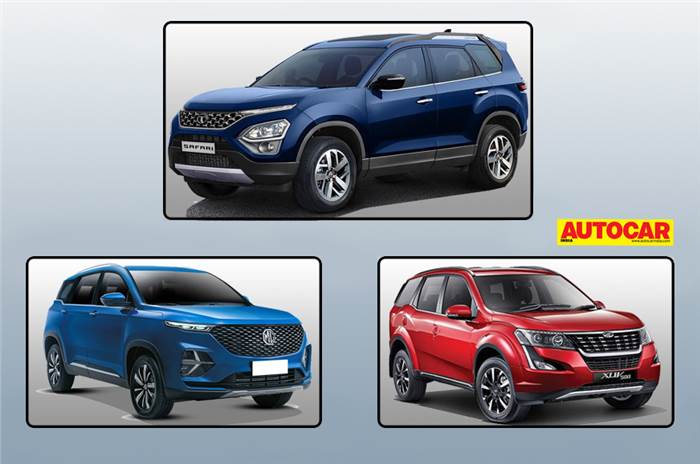
The all-new Tata Safari will launch in India on 22 February , becoming the carmakers new flagship SUV. Tata has already begun accepting booking for the SUV with the booking amount set at Rs 30,000.
- The Safari is the widest and tallest model in the comparison
- It comes with a 170hp, 2.0-litre turbo-diesel engine
- Tata offers both a 6-speed manual and automatic gearbox
There has been a lot of buzz around the Safari in the run up to its launch, and everyone is keen to see how it will compare to its rivals – the MG Hector Plus and Mahindra XUV500 . So, we have compiled all the technical specification of the Safari and its rivals, to see how they compare in terms of dimensions and powertrain.
2021 Tata vs rivals: dimensions
In terms of dimensions, all these three-row SUVs are quite close to one another, though each model has its strong suit. The MG Hector is the longest SUV in the comparison and has the longest wheelbase as well, with the Tata Safari coming in a close second.
The Safari is the widest model in this comparison, which when paired with its length, bodes well for its cabin space. At 1,890mm wide, the XUV500 loses out to the Safari by the slimmest of margins. In addition to its width, the Safari is also the tallest (at 1,786mm) of the SUVs we are comparing, with the XUV500 being within a hair’s margin of it (only 1mm shorter).
With all three rows of seats up, despite only offering 155-litre of space - the Hector Plus has the most boot space in the segment, as the XUV500 has 62-litres less and the Safari has the least amount of room being 82-litres smaller. Things change a bit with the third-row of seats folded, as here the XUV500 that has the smallest boot followed by the Safari, while the Hector Plus retains top spot with the largest boot.
2021 Tata vs rivals: diesel engine
Looking at the powertrain options, the units in Safari and Hector Plus are the most powerful as both models use a Fiat-sourced 2.0-litre, four-cylinder turbo-diesel engine producing 170hp and 350Nm. Despite the Mahindra XUV500 having the largest engine in this group – a 2.2-litre four-cylinder turbo-diesel, at 155hp it makes 15hp less than its rivals. Though the XUV500’s engine is the torquiest churning out 360Nm (which is 10Nm more than its rivals).
Coming to the gearbox options, all three SUVs come paired with 6-speed manual gearboxes as standard. The Tata Safari and Mahindra XUV500 both come with 6-speed torque converter automatic gearboxes, with the MG Hector Plus being the only model not to be offered with an auto box at this point.
It is also worth noting that all the SUVs we are comparing are currently only available with a front-wheel drive layout. The XUV500 used to be offered with an all-wheel drive layout earlier, though the carmaker dropped those versions with the transition to BS6. The Tata Safari on the other hand, due to its Land Rover derived platform, can accommodate an all-wheel drive system, which Tata may develop in the future.
2021 Tata vs rivals: future competitors
The three-row SUV segment is going to get more competitive as the year goes on, as the both the next-gen Mahindra XUV500 and Hyundai’s new seven-seat Creta based SUV are slated to be launched in India later in 2021.
2021 Tata Safari review, test drive
2021 Tata Safari image gallery
2021 Tata Safari: A close look
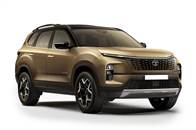
Tata Safari
₹ 18,85,781 * on road price (New Delhi)
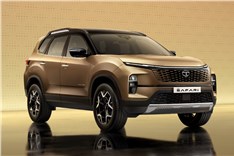
Tata Safari facelift image gallery
15785 Views | 6 months ago

Quick News Video, October 22, 2023
2376 Views | 5 months ago

Tata Harrier, Safari Global NCAP crash test results video
6503 Views | 6 months ago
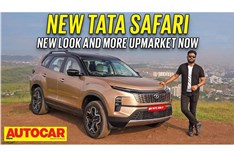
Tata Safari facelift video review
16042 Views | 6 months ago

Quick News Video, October 08, 2023
2695 Views | 6 months ago
Copyright (c) Autocar India. All rights reserved.
Member Login
Personal details.
No comments yet. Be the first to comment.
Need an expert opinion on your car and bike related queries?
Search by car price.
Cars between ₹ 5-10 lakhs
Cars between ₹ 10-15 Lakhs
Cars between ₹ 15-20 Lakhs
Cars between ₹ 20-40 Lakhs
Cars between ₹ 40-60 Lakhs
Cars between ₹ 60-80 Lakhs
Cars between ₹ 80 Lakhs - 1 Crore
Cars above ₹ 1 Crore
Poll of the month
The Mahindra XUV 300 facelift will be called the XUV 3XO. Should more brands rename models for facelifts?
Yes, it could give new life to a slow-selling car
Yes, but only if there are significant changes
No, it's confusing and dilutes the brand name
No difference, the product speaks for itself
Sign up for our newsletter
Get all the latest updates from the automobile universe
- Things to Do
- Restaurants
- Vacation Rentals
- Travel Stories
- Rental Cars
- Add a Place
- Travel Forum
- Travelers' Choice
- Help Center
Perfect hostel in the very center - Safari Hostel
- Europe
- Russia
- Central Russia
- Moscow
- Moscow Specialty Lodging
- Hostels in Moscow
- Safari Hostel
Perfect hostel in the very center
The newly opened in summer 2012, Safari hostel is simply but nicely furnished. The common are with free tea/coffee, a kitchen and a TV is almost always busy, but not too much. The only problem is finding the hostel in the small sidestreet inside the arches. Keep an eye - there are signboards on them.
- Sleep Quality
- Cleanliness

- Room service

It's pretty hard to find the hostel - it is in a side alley, which isn't very brightly lit. I'm 6'1" and it was a bit scary walking to the hostel in the dark. You have to enter through an arc, full of graffiti, and go straight for a while. Located on the left (or right, if you're going through THE OTHER arc... through a construction site), it looks more like a bunker or a bomb shelter. There is a tiny sign, and a big metal orange door. Right by it seems to be a backway entrance to some restaurant where all the restaurant staff hangs out and smokes... they seem kind of shady too. Not much to say about the staff - they seem fine. But nothing too special. The rooms are a bit cramped... not much space for living and luggage and all that. Yes, its downtown... but the area (dark alley) just doesn't seem safe. It's dark, bunch of graffiti, weird, shady guys smoking... I can't say I would recommend.
This hostel is very new. Great location close to Metro and Red Square etc. Rooms a little cramped but this seems to be the norm for Moscow. There are lockers which is great. Comfy beds and duvets etc. Nice and clean. Plenty of bathrooms-although it was fairly full there was rarely a wait. Kitchen nice and well equipped. Laundry 100 roubles - but the machine is very small! Staff friendly and helpful.
The location is 10 minutes walking to Kremkin and bear the metro but the entrace to the hostel is a little bit dark in the night. The room is clean, plenty of bathroom and also clean. Reading light and plug for every bed. Kitchen and common room is combined and looking good with fully facilities. 100 rubles for laundry. Nice staff. The Cheapest 8 bed room is only 440 rb.
It was a surprise to us that probably the cheapest hostel in Moscow is located in the center of the old city of Moscow. Moscow is a really expensive city, so the hostel where you can cook and it is not far away, is a priceless treasure. Less than a mile to the Red Square. The hostel is really like new, has a kitchen decorated as if someone was doing shopping at Ikea and do not forget to visit any department. Some pots were not even unpacked. Guests have at their disposal all kitchen appliances, large fridge, a machine for hot water, free tea and coffee (and sugar :). The living room is wonderfully decorated, has a wicker chairs, painting referring to Africa and tasteful (well, maybe a little abstract) cuddly African animals. Staff are friendly and very helpful. Provide very useful information about places in Moscow. In the hostel you can find some (new) guides, including Lonely Planet. They should, however, write that the guests do not wynosili their living room. They know even really strange. There is no problem with leaving one luggage. The rooms are very reasonably designed, each bed has a locker and two sockets at the correct height. Quite hard to get there, I think already working on hanging a large sign. Petrovka street side you enter the gate of a building with scaffolding. Hostel is a (orange?) metal door in a building on the right, a children's playground.
The staff is incredibly friendly and helpful. The location cannot be beat - it is walking distance away from Red Square/Kremlin and major theaters, multiple Metro stations and restaurants/bars. Love the bright colors and the funky decorations as well - most hostels I've been to have been rather drab, run-down affairs and these guys prove that even for a little money you don't have to settle for something that looks like an old hospital bed. All in all, for the $15/night I paid, this is a fantastic value and I would gladly come back here time and time again. In an expensive city that rarely lends itself to value, Safari is a welcome and pleasant surprise.
Advertisement
Supported by
Critic’s Pick
‘Civil War’ Review: We Have Met the Enemy and It Is Us. Again.
In Alex Garland’s tough new movie, a group of journalists led by Kirsten Dunst, as a photographer, travels a United States at war with itself.
- Share full article
‘Civil War’ | Anatomy of a Scene
The writer and director alex garland narrates a sequence from his film..
“My name is Alex Garland and I’m the writer director of ‘Civil War’. So this particular clip is roughly around the halfway point of the movie and it’s these four journalists and they’re trying to get, in a very circuitous route, from New York to DC, and encountering various obstacles on the way. And this is one of those obstacles. What they find themselves stuck in is a battle between two snipers. And they are close to one of the snipers and the other sniper is somewhere unseen, but presumably in a large house that sits over a field and a hill. It’s a surrealist exchange and it’s surrounded by some very surrealist imagery, which is they’re, in broad daylight in broad sunshine, there’s no indication that we’re anywhere near winter in the filming. In fact, you can kind of tell it’s summer. But they’re surrounded by Christmas decorations. And in some ways, the Christmas decorations speak of a country, which is in disrepair, however silly it sounds. If you haven’t put away your Christmas decorations, clearly something isn’t going right.” “What’s going on?” “Someone in that house, they’re stuck. We’re stuck.” “And there’s a bit of imagery. It felt like it hit the right note. But the interesting thing about that imagery was that it was not production designed. We didn’t create it. We actually literally found it. We were driving along and we saw all of these Christmas decorations, basically exactly as they are in the film. They were about 100 yards away, just piled up by the side of the road. And it turned out, it was a guy who’d put on a winter wonderland festival. People had not dug his winter wonderland festival, and he’d gone bankrupt. And he had decided just to leave everything just strewn around on a farmer’s field, who was then absolutely furious. So in a way, there’s a loose parallel, which is the same implication that exists within the film exists within real life.” “You don’t understand a word I say. Yo. What’s over there in that house?” “Someone shooting.” “It’s to do with the fact that when things get extreme, the reasons why things got extreme no longer become relevant and the knife edge of the problem is all that really remains relevant. So it doesn’t actually matter, as it were, in this context, what side they’re fighting for or what the other person’s fighting for. It’s just reduced to a survival.”

By Manohla Dargis
A blunt, gut-twisting work of speculative fiction, “Civil War” opens with the United States at war with itself — literally, not just rhetorically. In Washington, D.C., the president is holed up in the White House; in a spookily depopulated New York, desperate people wait for water rations. It’s the near-future, and rooftop snipers, suicide bombers and wild-eyed randos are in the fight while an opposition faction with a two-star flag called the Western Forces, comprising Texas and California — as I said, this is speculative fiction — is leading the charge against what remains of the federal government. If you’re feeling triggered, you aren’t alone.
It’s mourning again in America, and it’s mesmerizingly, horribly gripping. Filled with bullets, consuming fires and terrific actors like Kirsten Dunst running for cover, the movie is a what-if nightmare stoked by memories of Jan. 6. As in what if the visions of some rioters had been realized, what if the nation was again broken by Civil War, what if the democratic experiment called America had come undone? If that sounds harrowing, you’re right. It’s one thing when a movie taps into childish fears with monsters under the bed; you’re eager to see what happens because you know how it will end (until the sequel). Adult fears are another matter.
In “Civil War,” the British filmmaker Alex Garland explores the unbearable if not the unthinkable, something he likes to do. A pop cultural savant, he made a splashy zeitgeist-ready debut with his 1996 best seller “The Beach,” a novel about a paradise that proves deadly, an evergreen metaphor for life and the basis for a silly film . That things in the world are not what they seem, and are often far worse, is a theme that Garland has continued pursuing in other dark fantasies, first as a screenwriter (“ 28 Days Later ”), and then as a writer-director (“ Ex Machina ”). His résumé is populated with zombies, clones and aliens, though reliably it is his outwardly ordinary characters you need to keep a closer watch on.
By the time “Civil War” opens, the fight has been raging for an undisclosed period yet long enough to have hollowed out cities and people’s faces alike. It’s unclear as to why the war started or who fired the first shot. Garland does scatter some hints; in one ugly scene, a militia type played by a jolting, scarily effective Jesse Plemons asks captives “what kind of American” they are. Yet whatever divisions preceded the conflict are left to your imagination, at least partly because Garland assumes you’ve been paying attention to recent events. Instead, he presents an outwardly and largely post-ideological landscape in which debates over policies, politics and American exceptionalism have been rendered moot by war.
‘Civil War’ Is Designed to Disturb You

One thing that remains familiar amid these ruins is the movie’s old-fashioned faith in journalism. Dunst, who’s sensational, plays Lee, a war photographer who works for Reuters alongside her friend, a reporter, Joel (the charismatic Wagner Moura). They’re in New York when you meet them, milling through a crowd anxiously waiting for water rations next to a protected tanker. It’s a fraught scene; the restless crowd is edging into mob panic, and Lee, camera in hand, is on high alert. As Garland’s own camera and Joel skitter about, Lee carves a path through the chaos, as if she knows exactly where she needs to be — and then a bomb goes off. By the time it does, an aspiring photojournalist, Jessie (Cailee Spaeny), is also in the mix.
The streamlined, insistently intimate story takes shape once Lee, Joel, Jessie and a veteran reporter, Sammy (Stephen McKinley Henderson), pile into a van and head to Washington. Joel and Lee are hoping to interview the president (Nick Offerman), and Sammy and Jessie are riding along largely so that Garland can make the trip more interesting. Sammy serves as a stabilizing force (Henderson fills the van with humanizing warmth), while Jessie plays the eager upstart Lee takes under her resentful wing. It’s a tidily balanced sampling that the actors, with Garland’s banter and via some cozy downtime, turn into flesh-and-blood personalities, people whose vulnerability feeds the escalating tension with each mile.
As the miles and hours pass, Garland adds diversions and hurdles, including a pair of playful colleagues, Tony and Bohai (Nelson Lee and Evan Lai), and some spooky dudes guarding a gas station. Garland shrewdly exploits the tense emptiness of the land, turning strangers into potential threats and pretty country roads into ominously ambiguous byways. Smartly, he also recurrently focuses on Lee’s face, a heartbreakingly hard mask that Dunst lets slip brilliantly. As the journey continues, Garland further sketches in the bigger picture — the dollar is near-worthless, the F.B.I. is gone — but for the most part, he focuses on his travelers and the engulfing violence, the smoke and the tracer fire that they often don’t notice until they do.
Despite some much-needed lulls (for you, for the narrative rhythm), “Civil War” is unremittingly brutal or at least it feels that way. Many contemporary thrillers are far more overtly gruesome than this one, partly because violence is one way unimaginative directors can put a distinctive spin on otherwise interchangeable material: Cue the artful fountains of arterial spray. Part of what makes the carnage here feel incessant and palpably realistic is that Garland, whose visual approach is generally unfussy, doesn’t embellish the violence, turning it into an ornament of his virtuosity. Instead, the violence is direct, at times shockingly casual and unsettling, so much so that its unpleasantness almost comes as a surprise.
If the violence feels more intense than in a typical genre shoot ’em up, it’s also because, I think, with “Civil War,” Garland has made the movie that’s long been workshopped in American political discourse and in mass culture, and which entered wider circulation on Jan. 6. The raw power of Garland’s vision unquestionably owes much to the vivid scenes that beamed across the world that day when rioters, some wearing T-shirts emblazoned with “ MAGA civil war ,” swarmed the Capitol. Even so, watching this movie, I also flashed on other times in which Americans have relitigated the Civil War directly and not, on the screen and in the streets.
Movies have played a role in that relitigation for more than a century, at times grotesquely. Two of the most famous films in history — D.W. Griffith’s 1915 racist epic “The Birth of a Nation” (which became a Ku Klux Klan recruitment tool) and the romantic 1939 melodrama “Gone With the Wind” — are monuments to white supremacy and the myth of the Southern Lost Cause. Both were critical and popular hits. In the decades since, filmmakers have returned to the Civil War era to tell other stories in films like “Glory,” “Lincoln” and “Django Unchained” that in addressing the American past inevitably engage with its present.
There are no lofty or reassuring speeches in “Civil War,” and the movie doesn’t speak to the better angels of our nature the way so many films try to. Hollywood’s longstanding, deeply American imperative for happy endings maintains an iron grip on movies, even in ostensibly independent productions. There’s no such possibility for that in “Civil War.” The very premise of Garland’s movie means that — no matter what happens when or if Lee and the rest reach Washington — a happy ending is impossible, which makes this very tough going. Rarely have I seen a movie that made me so acutely uncomfortable or watched an actor’s face that, like Dunst’s, expressed a nation’s soul-sickness so vividly that it felt like an X-ray.
Civil War Rated R for war violence and mass death. Running time: 1 hour 49 minutes. In theaters.
An earlier version of this review misidentified an organization in the Civil War in the movie. It is the Western Forces, not the Western Front.
How we handle corrections
Manohla Dargis is the chief film critic for The Times. More about Manohla Dargis
Explore More in TV and Movies
Not sure what to watch next we can help..
Even before his new film “Civil War” was released, the writer-director Alex Garland faced controversy over his vision of a divided America with Texas and California as allies.
Theda Hammel’s directorial debut, “Stress Positions,” a comedy about millennials weathering the early days of the pandemic , will ask audiences to return to a time that many people would rather forget.
“Fallout,” TV’s latest big-ticket video game adaptation, takes a satirical, self-aware approach to the End Times .
“Sasquatch Sunset” follows the creatures as they go about their lives. We had so many questions. The film’s cast and crew had answers .
If you are overwhelmed by the endless options, don’t despair — we put together the best offerings on Netflix , Max , Disney+ , Amazon Prime and Hulu to make choosing your next binge a little easier.
Sign up for our Watching newsletter to get recommendations on the best films and TV shows to stream and watch, delivered to your inbox.
Maruti Suzuki Grand Vitara

About Maruti Suzuki Grand Vitara
- Can Brezza, Grand Vitara get 5-star safety rating at Bharat NCAP? Check features
- Maruti Suzuki Grand Vitara and Swift prices hiked. Check how much they cost now
Maruti Suzuki Grand Vitara Alternatives
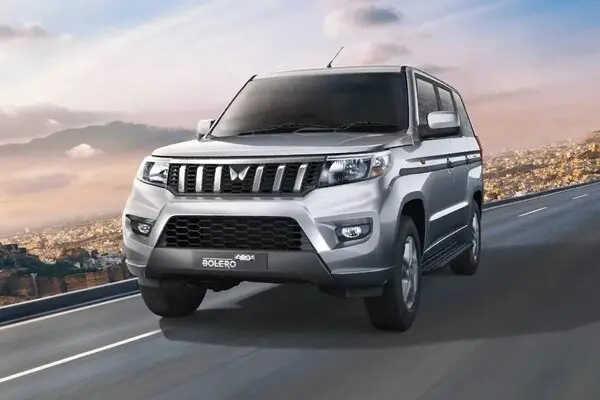
Mahindra Bolero Neo Plus
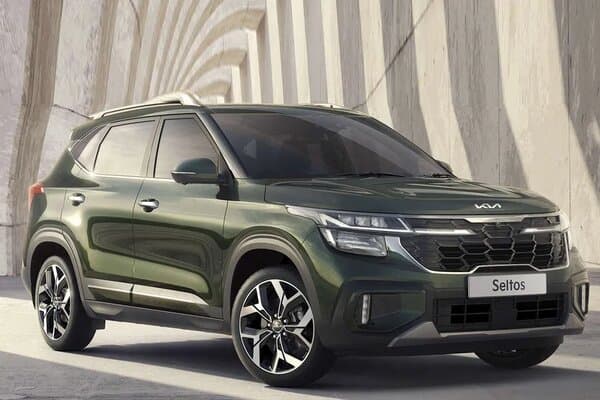
Mahindra XUV 3XO
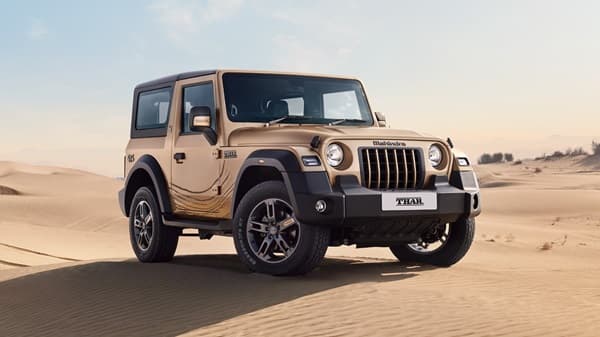
Mahindra Thar
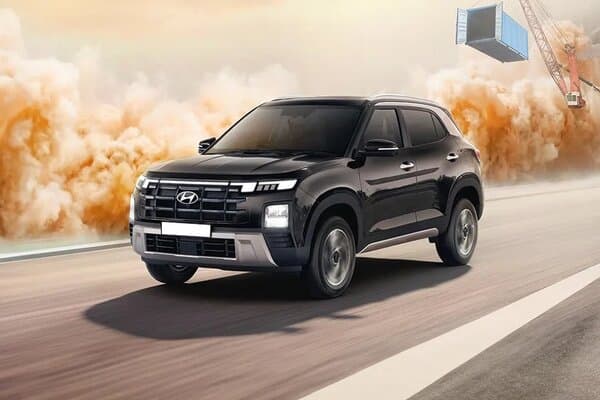
Hyundai Creta
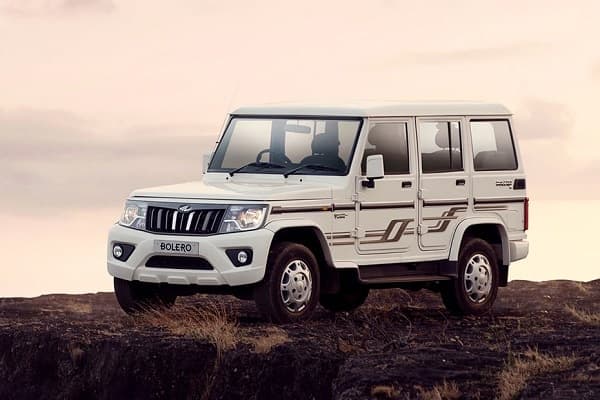
Mahindra Bolero
Maruti suzuki grand vitara variants & price.
Maruti Suzuki Grand Vitara price starts at ₹ 10.7 Lakhs and goes up to ₹ 19.95 Lakhs (Ex-showroom). Maruti Suzuki Grand Vitara comes in 17 variants. Maruti Suzuki Grand Vitara's top variant is Alpha Plus Dual Tone Intelligent Hybrid eCVT.

Maruti Suzuki Grand Vitara Specifications and Features
Maruti suzuki grand vitara comparison with its competitors, maruti suzuki grand vitara mileage.
Maruti Suzuki Grand Vitara in India is available in Hybrid (Electric + Petrol) & CNG variants. Average mileage of Maruti Suzuki Grand Vitara's petrol variant is 21.11 kmpl (As claimed by the brand in ideal road conditions). Maruti Suzuki Grand Vitara Sigma Smart Hybrid comes with a 45 litre...
s fuel tank.
Popular Maruti Suzuki Cars
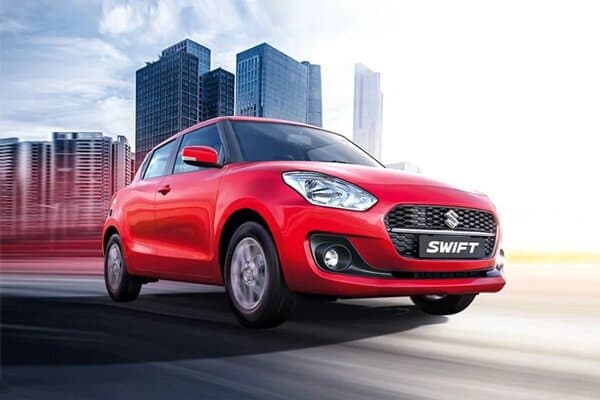
Maruti Suzuki Swift
*Ex-showroom price

Maruti Suzuki Brezza

Maruti Suzuki Ertiga
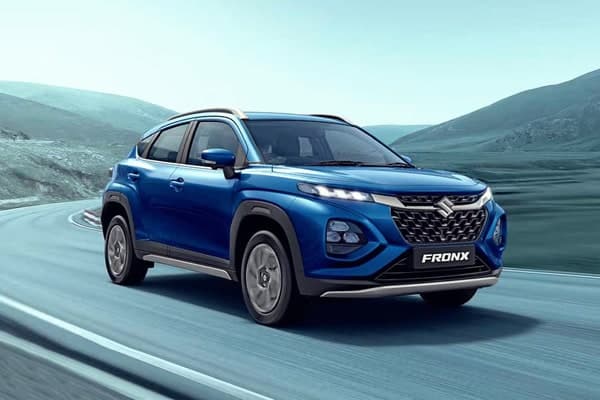
Maruti Suzuki Fronx
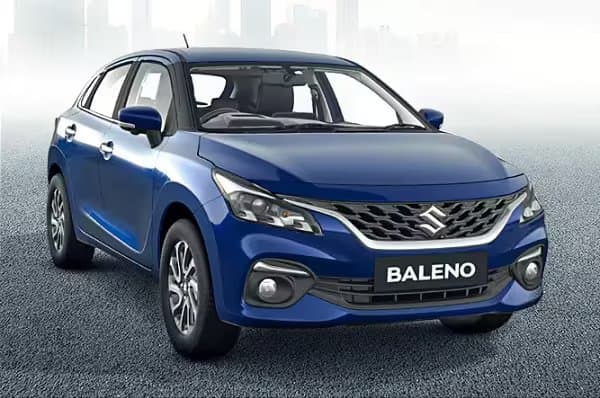
Maruti Suzuki Baleno
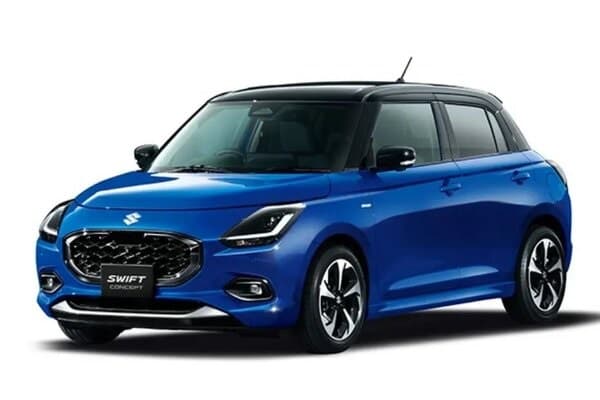
Maruti Suzuki Swift 2024
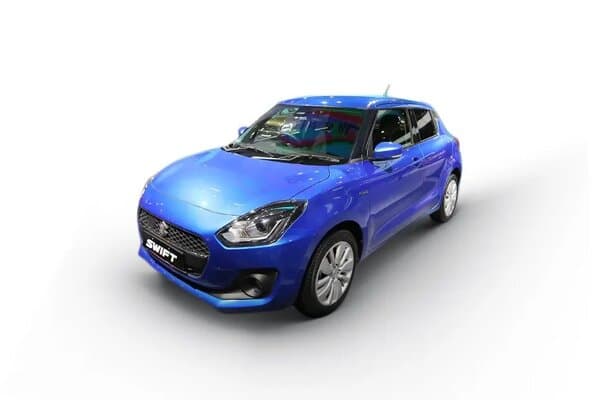
Maruti Suzuki Swift Hybrid
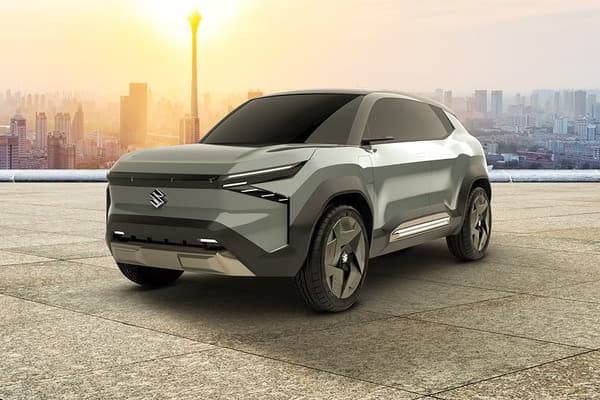
Maruti Suzuki eVX

Maruti Suzuki Wagon R EV
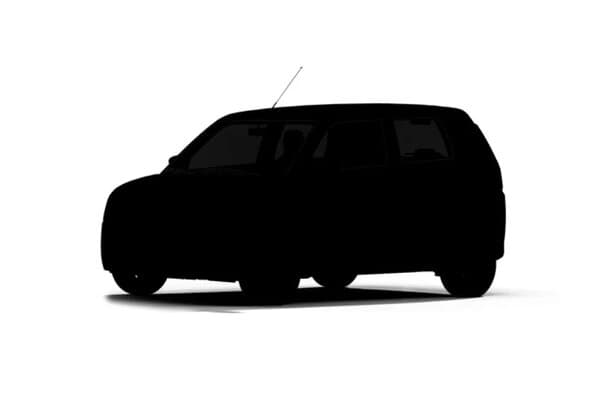
Maruti Suzuki XL5
Once upon a time, Maruti Suzuki seemed quite content and satisfied in ruling the Indian car market through its offerings in the small, compact and hatchback segments. It made sense because these segments did - and largely still do, dominate over all others here. But while dreams of bigger vehicles were always carefully nurtured, the eventual outcome in reality was quite nightmare. The Vitara SUV failed for reasons much spoken about in the past while the Kizashi barely trickled much interest either. Thus far then, the Vitara Brezza - now called Brezza - was the largest SUV from the Maruti camp despite the mid-size SUV space expanding big-time since around 2015. Hyundai Creta , Kia Seltos , Tata Harrier - the list is as long as it is credible. And by its own admission, Maruti Suzuki was missing out on a large chunk of the pie. Well, not anymore because in comes the Maruti Suzuki Grand Vitara SUV that may be late to the party but is now readying to up the decibel levels several notches higher.
Here's a first full-drive review of the Maruti Suzuki Grand Vitara SUV:
Grand Vitara exterior highlights: Dressed and decked for war
Half the battle is usually one if an SUV is able to become a talking point courtesy its looks alone. And the designers at the Maruti Suzuki camp may have struggled in this aspect in the past. But not anymore. While the recently-launched 2022 Brezza has received an overwhelmingly positive response based on its exterior styling cues alone, the Grand Vitara is looking to build on it further.
There will be comparisons to the recently-launched Toyota Urban Cruiser Hyryder and that's obvious because both vehicles have been jointly developed and would also be manufactured at the same plant - the Toyota facility in Karnataka's Bidadi. But while the Hyryder looks young and rather funky, the several Maruti touches to the Grand Vitara make it appear young and mature. Take the front grille for instance. It is the second-most noticeable highlight on the face of the vehicle, complete with chrome inserts and a single slat across it. The main highlight here is the three-pod LED DRLs on either side mounted high up to grand instant attention. The headlight units find a place lower down in a square casing while there is a grey finish on the lower bumper area.
Over at the side, the Grand Vitara isn't trying too hard to command attention but the large square wheel-arches, the dual-tone alloy design on the 17-inch wheels, large windows and an elongated character line towards the bottom of the two doors are good examples of sporty sophistication without going overboard.
Move to the rear and here is where the Grand Vitara is promising to grab maximum attention. Wraparound LED headlights, a twin-stretch LED light bar on the trunk door and the 'Grand Vitara' lettering lends the SUV a sporty and aggressive appeal. In fact, the ground clearance of the Grand Vitara is instantly evident from here and from the side with a road presence that's mighty impressive.
The Maruti Suzuki Grand Vitara is being offered in nine colour options - six in single tone and three in dual-tone choices.
Grand Vitara cabin highlights: Lock, stock and barrel
Whoever said that Maruti cars have one of the most mundane interiors clearly knows what he or she is talking about. Traditionally, the folks over at Maruti have not spent much time upping cabin quality and features but that's something that is clearly changing now owing to increased customer preference and diverse requirements, apart from the fact that rivals like Hyundai and Kia have always aced this game.
Step inside the Grand Vitara and this isn't a Maruti from yesteryears one bit. There are multiple variants under the mild and strong hybrid trims with the former offering a dual-tone colour scheme - Black plus Bordeaux - with silver accents, and the more premium strong hybrids offering an all-Black cabin with Champagne Gold accents on the dashboard and all four doors. The layered dashboard design in itself isn't exactly new but the generous use of soft-touch materials is a reaffirmation of how much Maruti wants to shed its mass-market brand tag, for this particular model at least.
While largely similar, if not identical to the cabin of the Hyryder, the Grand Vitara gets the same nine-inch SmartPlay Pro Plus infotainment system which has become a common sight on newer models from the brand. The free-standing screen still occupies quite a chunk of visual real estate but is as intuitive to use as on all models. There is support for Android Auto and Apple CarPlay while Suzuki Connect on mobile and smartwatches enables over 40 features like letting you track the car, turn on or adjust air-conditioning remotely, unlock doors, get safety alerts, check vehicle status and run diagnostics.
There also is a 4.2-inch driver screen but while the all-digital display on the strong hybrid variants is cutting-edge and contemporary, Maruti Suzuki ought to have had this for the mild-hybrid auto and manual variants as well. Unfortunately, these trims will continue getting an analogue screen that's very yesterday.
The SUV, generally, is loaded with features but pay close attention to what you will get on the trim and variant you eventually choose. Front ventilated seats and a premium sound system are reserved for only the top variant of the strong hybrid trim - Alpha+, Head-Up Display (HUD) and wireless phone charging is not offered on the mild hybrid trim at all and neither is the gorgeous panoramic sunroof on top.
The basics, however, are sorted with all variants and trims come with rear AC vents, multiple charging points, reclining rear seats, and electric ORVMs. Keyless entry and push-button start/stop is also standard across the range.
What is also standard across the board, obviously, is the generous space on offer inside. There is adequate space for feet, legs and good under-thigh support. Headroom too is just about okay but a slight hump on the floor bed means that the passenger in the middle isn't likely to be too comfortable on long rides. The cabin still does benefit big-time from the large windows and even larger sunroof, making for a pleasant experience inside. The boot space, however, is a sore point on the strong hybrid version and at around 370 litres, is significantly less than non-hybrid rivals which don't need to pack in a battery within. As for the mild-hybrid variants, the space at the absolute back is about par for the course.
Grand Vitara cabin highlights: Driving a mean distance
Now here is where the Grand Vitara really has several aces up its sleeves. As mentioned previously, it comes in mild and strong hybrid trims. The strong hybrid technology is taken straight from Toyota and is the same as the one on the Hyryder. Therefore, these two are the only two mid-size SUVs in the market at present to offer a strong and credible hybrid option with a claimed fuel efficiency of around 28 kmpl. In our test drives on both vehicles, we observed a fuel efficiency of around 23 kmpl - impressive considering the amount of heavy throttling, screech braking and standstill video shoots we did over at least five hours.
A real-world mileage of over 23 kmpl is also impressive considering that the Grand Vitara is powered by a 1.5-litre engine which has a combined output of 114 bhp and offers 122 Nm of torque. It isn't nearly as exciting to drive as the turbo engine-powered Korean SUVs but then again, it seems it isn't trying to be either. Paired with an e-CVT transmission, the Maruti SUV has a familiarly reassuring aura on the move with a well-weighted steering, good straight-line stability and a suspension that is always famished enough to gobble all that comes its way. On the flip side, the SUV isn't very eager when thrown into corners and body roll is palpable in the back seats.
While the strong hybrid engine is mated only to that well-tuned e-CVT unit, the mild-hybrid variants come with an option to choose between a five-speed manual and a six-speed torque converter unit. We briefly tested both of these.
The power output and torque on offer on the mild hybrid variant are at 101 bhp and 136.8 Nm. In the real world, the difference in power output isn't very evident although the bump up in torque does help make matters, especially when looking at strategizing overtakes. The MT is on tried and tested lines with relatively short throws and the addition of paddle shifters help matters further. On open roads though, I missed not having an additional sixth gear to further elevate the refinement on offer. As for the automatic, I have always kept my expectations low but on the Grand Vitara, its tuning is vastly superior than ever before. If on a budget and yet desiring an AT, the balancing act of the mild-hybrid motor with this auto unit is a job well done.
Overall, Grand Vitara offers is going in head-on as an all-rounder with something for everyone, with the addition of Suzuki AllGrip Select for the first time ever for some downright dirty moves!
Maruti Suzuki Grand Vitara: Let's talk dirty!
The Grand Vitara is the first Maruti Suzuki model to come equipped with Suzuki AllGrip Select technology which underlines its AWD (All-Wheel Drive) abilities. The technology is only available on the mild-hybrid variants with manual transmission.
The SUV comes with four drive modes - Auto, Sport, Snow and Lock, and while it isn't exactly meant to play in treacherous terrain, it can be capable enough to take you out of tricky situations like broken roads, slush and over and above steep inclines.
Broadly, the Grand Vitara with AllGrip Select drives on the front two wheels at all times but the driver has the option of rotating the knob on the centre console to gain more traction when required. In case of slippery conditions, power is sent to the rear wheels through an electronic coupling to help the vehicle out. How much power is sent to the rear wheels depends on the mode selected and the mode selected would depend on what terrain the Grand Vitara is on. During our off-road experience, we encountered a variety of challenges - barring snow - and the SUV managed to pull forward each time.
Maruti Suzuki Grand Vitara: Verdict
Try and try till you succeed - this message is surely plastered somewhere on the walls of Maruti Suzuki's mid-size SUV division if it has one that is. The Grand Vitara is a manifestation of observing the ever-evolving SUV market and the ever-demanding, ever-aspirational customer base. It packs almost everything that a buyer in the mid-size SUV space is looking for, and then some more - strong hybrid tech, solid looks, quite a premium cabin, plenty of features and moderate off-road capabilities as well. Unlike its much smaller siblings, it truly deserves to be called an SUV.
The Grand Vitara also packs in six airbags and a number of other safety highlights like Hill-Descent Control, 360-degree view camera, and Tyre Pressure Monitoring System (TMPS), among others. Now if it manages a strong crash safety rating, it could slam the door shut on critics of the brand once and for all.
Maruti Suzuki Grand Vitara News
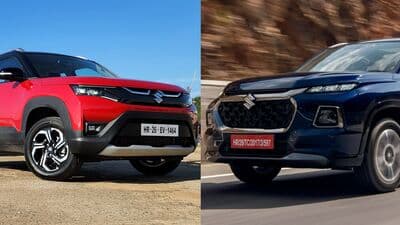
Maruti Suzuki Grand Vitara related Videos
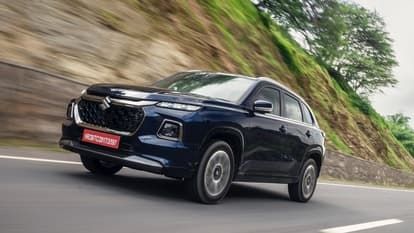
Explore Other Options
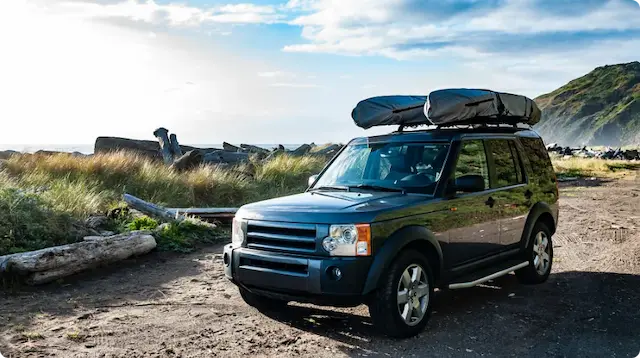
Maruti Suzuki Grand Vitara FAQs
Latest cars in india 2024.

Skoda Superb
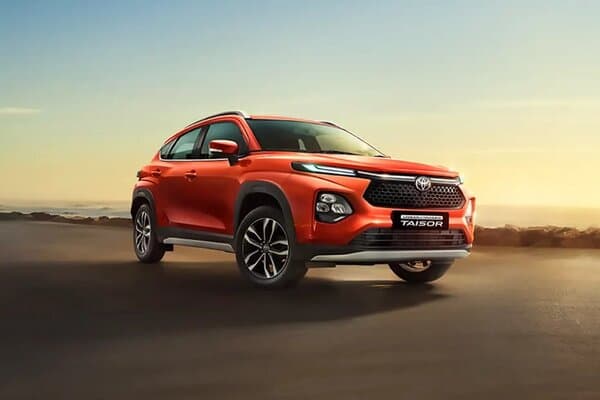
Toyota Urban Cruiser Taisor
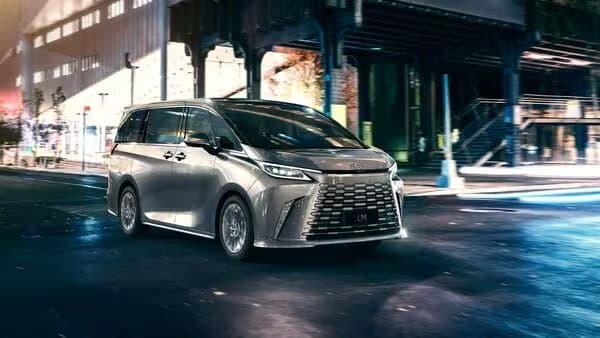
Hyundai Creta N Line
Popular cars in india 2024.
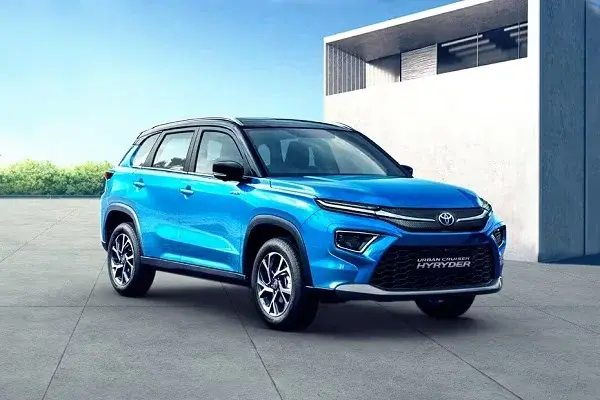
Toyota Urban Cruiser Hyryder

Mahindra XUV700
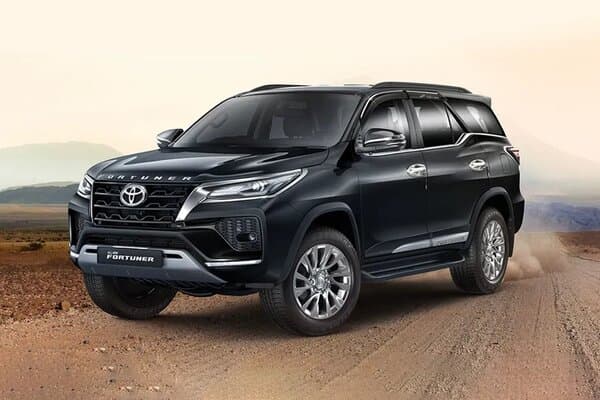
Toyota Fortuner
Upcoming cars in india 2024.
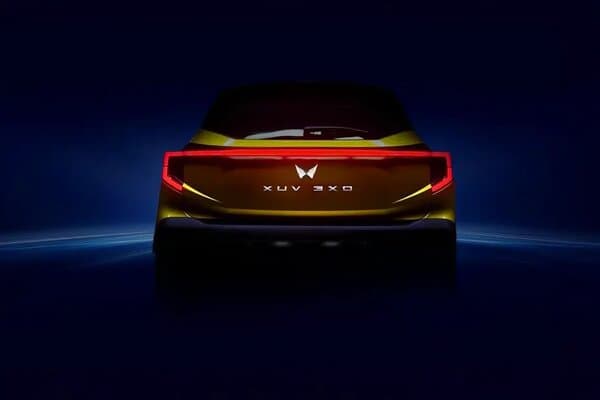
Rolls-Royce New Ghost
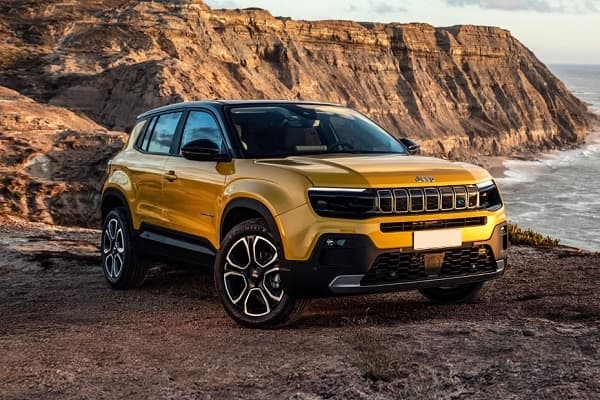
Jeep Avenger
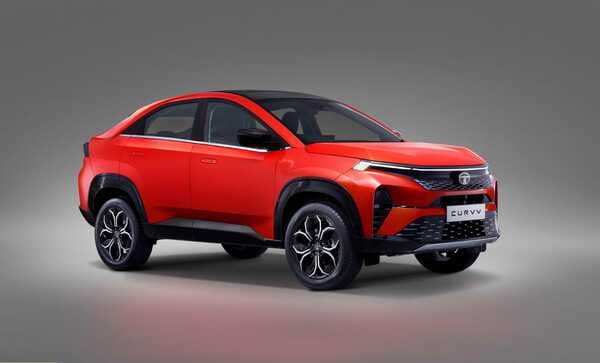
Popular SUV Cars

Mahindra Ekuv100
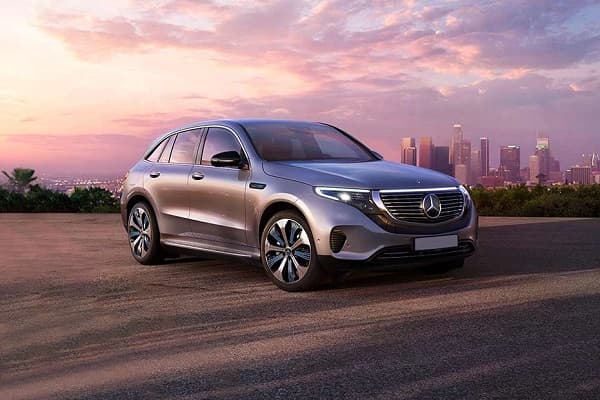
Mercedes-Benz EQC
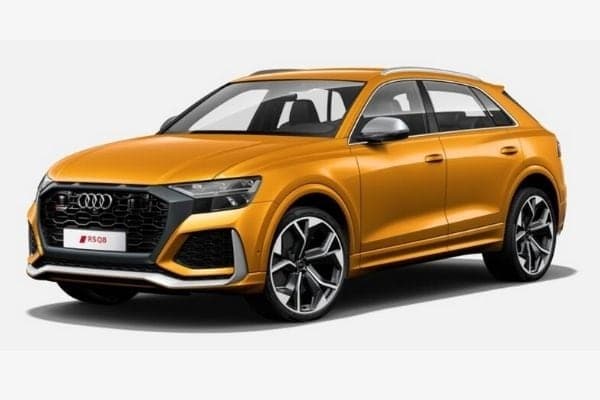
Audi e-tron Sportback
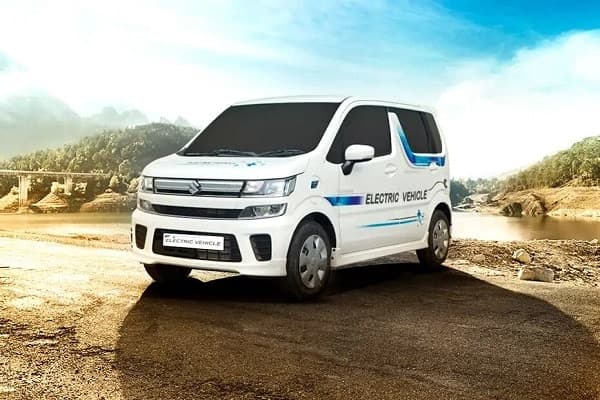
sundarban cruise from dhaka


IMAGES
VIDEO
COMMENTS
Safari Trucks. If you really want to go off the grid and live in the bush, then a safari truck is the answer. These beasts are normally caravans on wheels with either 4×4 or 6×6 capabilities and can live in the middle of nowhere for weeks on end. Other safari trucks that are used are normal vans, such as a sprinter van.
The type of safari vehicle you will be riding in will generally vary depending on the style of safari you choose and your African destination.The design and purpose of these different safari vehicles are to provide the most comfort and enhance your game-viewing experience.Below is an overview of the most common vehicles used based on destination.
Safari vehicles generally vary depending on the type of safari you're on and the country you're visiting - some vehicles are completely open and others can close up to make longer-distance road transfers more comfortable. On self-drive or fly-in safaris to lodges or camps, you'll enjoy game drives in specially adapted vehicles. Rugged and ...
🤔Choosing the best African Safari Vehicles When choosing the best African safari vehicles, consider your comfort needs, the type of wildlife experience desired, and the safari location when choosing an African safari vehicle. An open-sided vehicle offers a more immersive experience with fewer restrictions in private concessions. This would be ideal for safaris in Southern Africa such as ...
More Overland Africa Tours. 2. Minibus or Microbus Safari Vehicles. For smaller safari groups and shorter tours that don't go through hugely rugged areas, adapted microbuses (or minibuses) are used. As safari vehicles, Toyota Quantums and Mercedes Sprinters are most commonly used.
These game drives are offered in two types of safari vehicles: the most common African safari vehicles you're likely to come across. The first is 4x4s - usually Land Cruisers or Land Rovers which have been converted for game drives with things like a tracker's seat in front of the bonnet of the car, radios for communication with the lodge ...
Most vehicles are roofless, while others have a canvas sunshade to protect you from the hot African sun. These open style vehicles may also have a jump seat for your safari tracker, who is always on the lookout for wildlife. In some Southern African countries like Botswana and Zimbabwe, you may also ride in a closed 4x4 safari vehicle.
Every Brave Africa safari vehicle offers 2 USB ports per seat. Here's a picture of the four slots for the two front seats. 5. Refrigerator System. When it's 35 degrees Celsius (95F), it's way too hot not to have access to ice-cold water, juice, soda, or beer to cool you down in the heat.
The type of vehicle that will be used for a safari often has to do with WHERE that safari is taking place and is not just a random happenstance. The basic rule of thumb is that in Southern Africa (South Africa, Zimbabwe, Zambia, Botswana, and Namibia) you'll find more open vehicles, while in Eastern Africa (Uganda, Rwanda, Kenya, and Tanzania ...
The Best Safari Vehicle for Wildlife Viewing. Tanzania is a WIDE open space. When you go on an African safari and a game drive through the Serengeti, you'll be spending a lot of time and covering a ton of land by car. So, the vehicle you choose to travel in can determine the ultimate success of your trip. Watch the video below to hear from ...
These are only used in Nairobi for transfers. All our Kenya safaris are in 4WD's. Road-based safaris use closed 4WD's, typically Toyota Landcruisers with a pop-top roof. For fly-in safaris, a combination of light aircraft and open-sided 4WD's with a sun canopy, are used. Open-sided 4WD's vehicles offer greater visibility and provide ...
Your 4×4 vehicle expertly maneuvered by our experienced knowledgeable Safari guide is your safe house. It will keep you cocooned from the wildlife, the rough terrain bumpety bump ride, and the range of weather elements you will encounter. The vehicle will act as your photography hide, breakfast and/or lunch table especially the bonnet/hood ...
The majority of safari cars have 6 seats in the rear, and a passenger seat beside the driver for a total of 7 seats. All safari cars or trucks run by reputable operators should be well-maintained and have all required safety equipment; including a spare tire, a jack, a first aid kit and a fire extinguisher. ...
It's much easier to capture photos and the experience seems much closer. If shade is needed most vehicles will have sunshades. Whatever sort of vehicle you're in you'll have an amazing safari, for more inspiration, check out our 26 best safari ideas or call our team on 01768 603 715 and they'd be happy to help.
The type of safari vehicle you will use while on safari depends on the style of safari you choose and the destinations or locations you will be visiting. ... The most popular brand of safari cars is the Toyota 4×4 Land cruiser modified to a 7 seat capacity which guarantees each occupant a window seat for ease of wildlife viewing the pop roof ...
To avoid having a bad experience when on safari and maximise on the experience, we have highlighted six things to consider when choosing a safari car. 1. The type of vehicle. One of the most recommended cars for a safari is the Toyota LandCruiser. Toyota Landcruisers are amazing cars. They can easily handle rough terrains and swampy areas.
The recipe is fairly simple: take an orthodox car, add unorthodox ground clearance, all-terrain tires, and hit the dirt. Inspired by the East African Safari, and in particular, the Martini liveried Porsche 911s that took part in 1978, the popularity of the 'Safari Build' continues to climb to heady new heights.
What is a safari car? A safari in Africa is a very special type of vacation. The word "safari" literally means journey in the Swahili language, but the name has become associated with a specific type of trip that takes visitors to Africa's large savannah plains to see the pristine nature and wildlife Africa is best known for.
The Safari is the widest and tallest model in the comparison. It comes with a 170hp, 2.0-litre turbo-diesel engine. Tata offers both a 6-speed manual and automatic gearbox. There has been a lot of ...
Safari Hostel: Perfect hostel in the very center - See 123 traveler reviews, 96 candid photos, and great deals for Safari Hostel at Tripadvisor.
Sports cars: Moscow. Yachts: Novorizhskoe sh. Space: Kazakhstan, Baikonur. Our office. 143070 Kubinka, street Zheleznodorozhnay 1A office №21 +7 (925) 445-99-32 ...
Whether you love exotics or muscle cars, Classics on Autotrader helps classic car and project car enthusiasts connect with classic car dealers and private sellers across the United States. Find classic and antique cars, classic trucks, muscle cars and project cars for sale. Search by make, model, year and more.
Rarely have I seen a movie that made me so acutely uncomfortable or watched an actor's face that, like Dunst's, expressed a nation's soul-sickness so vividly that it felt like an X-ray ...
Maruti Suzuki Grand Vitara is a 5 Seater seater car, Ex-showroom price starting from Rs. 10,70,000 in India. It is available in 17 variants, 1462 engine available in and 2 transmission option: Manual,Automatic. Maruti Suzuki Grand Vitara mileage is 20.53 - 27.97. 4.5 out of 5. Review & Win ₹2000 Voucher. ₹ 10.7 - 19.95 Lakhs*. Get On Road ...
Sesame Street - Snuffy's Safari by Sesame Workshop. Publication date 2004 Topics flash, sesame street, snuffy, snuffleupagus, 2000's Language English. A Sesame Street flash game originally from sesamestreet.com. Files mostly ripped from cdn.sesameworkshop.org's archives.... Sesame Street Alphabet Soup; Bumper Cars Check Out Cookie Chicken Dance Elmo; The Close-Up Game Clouds Color Me Hungry ...